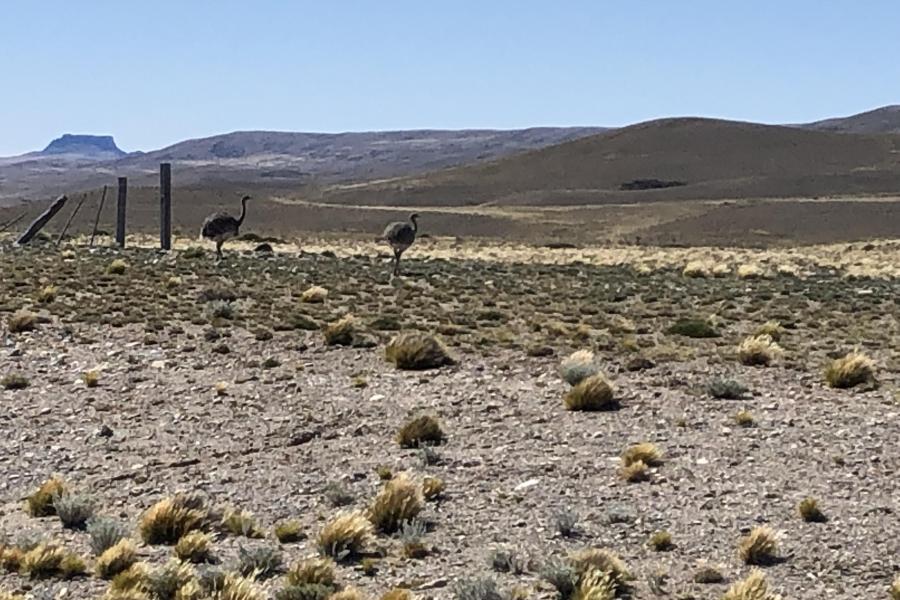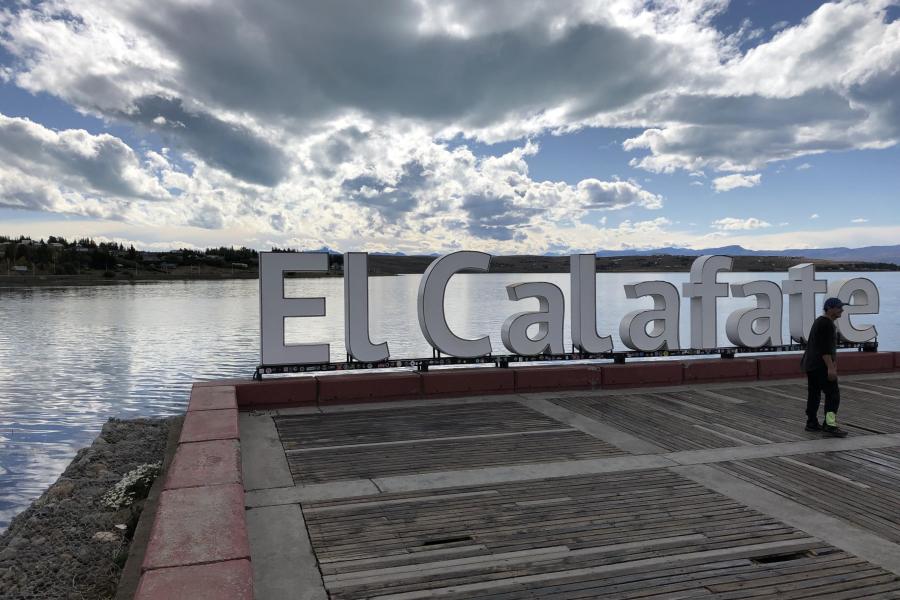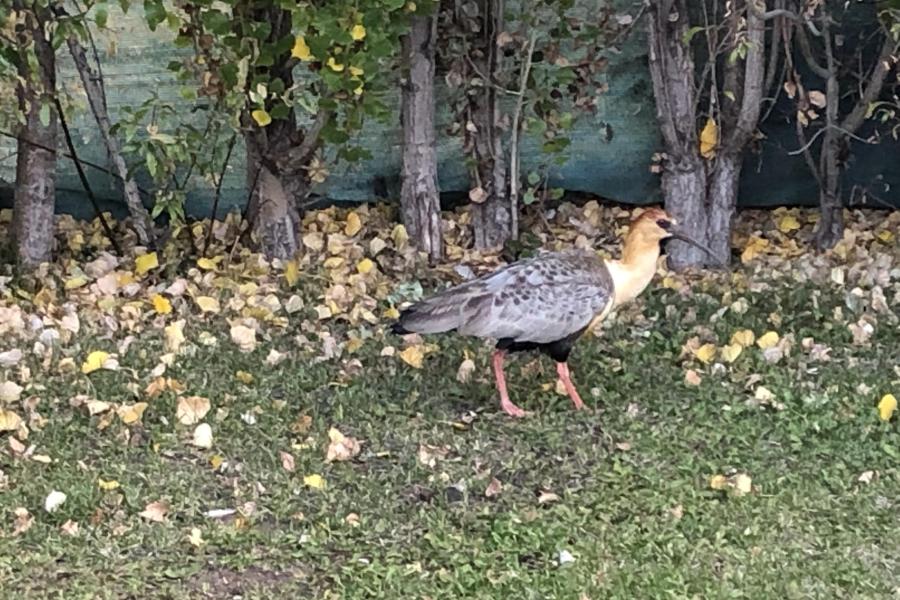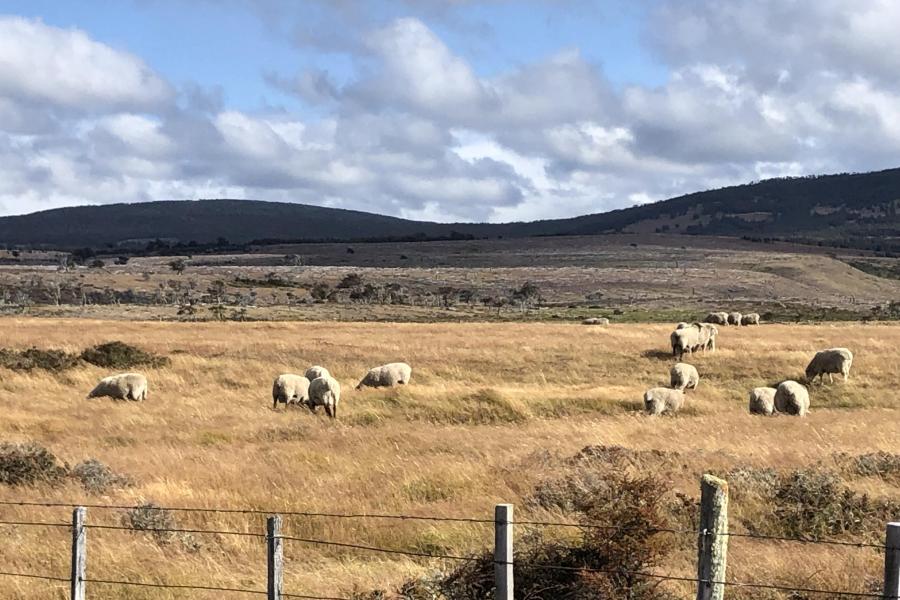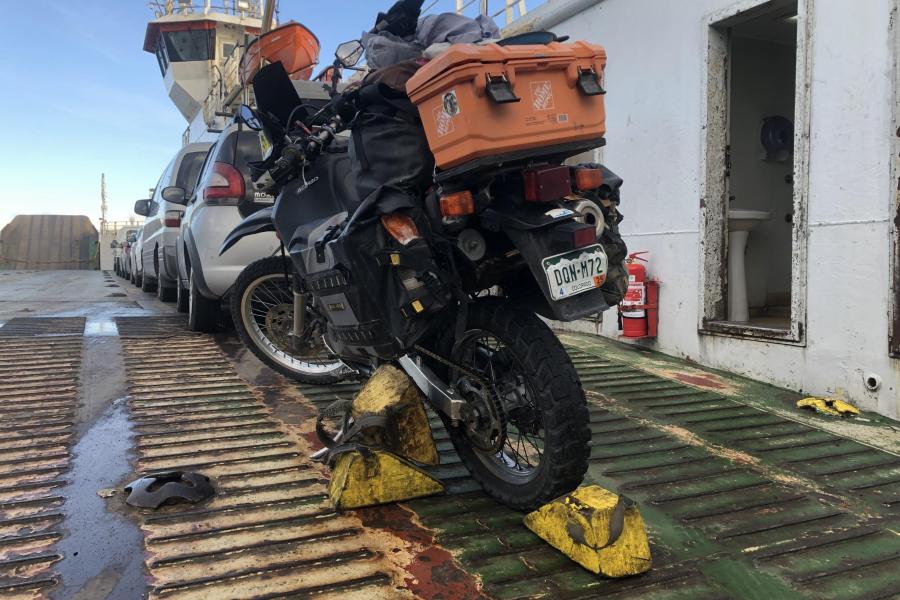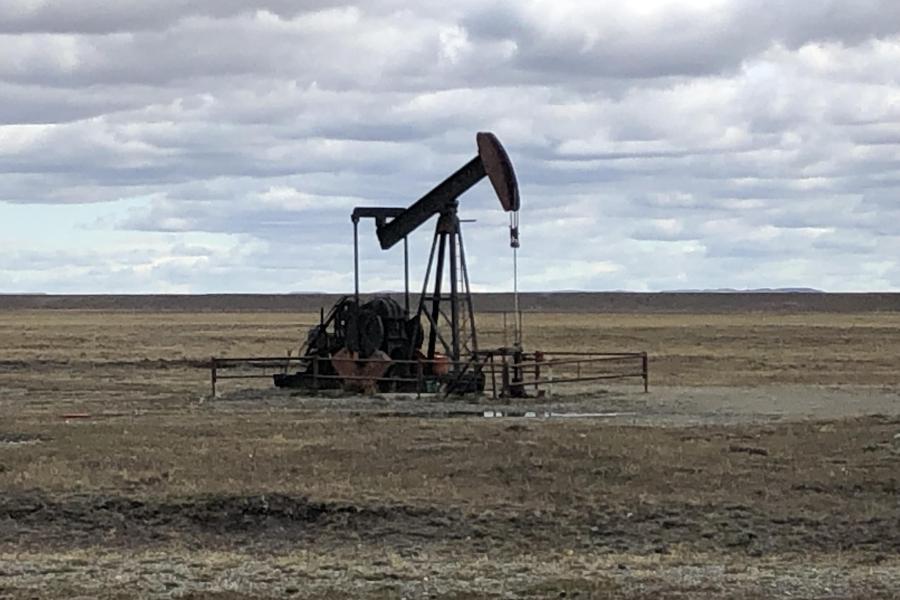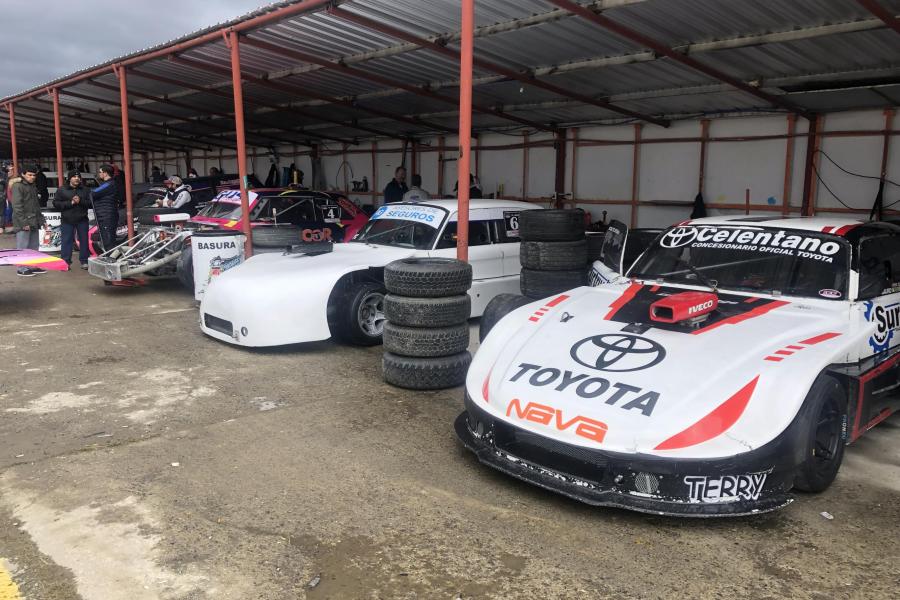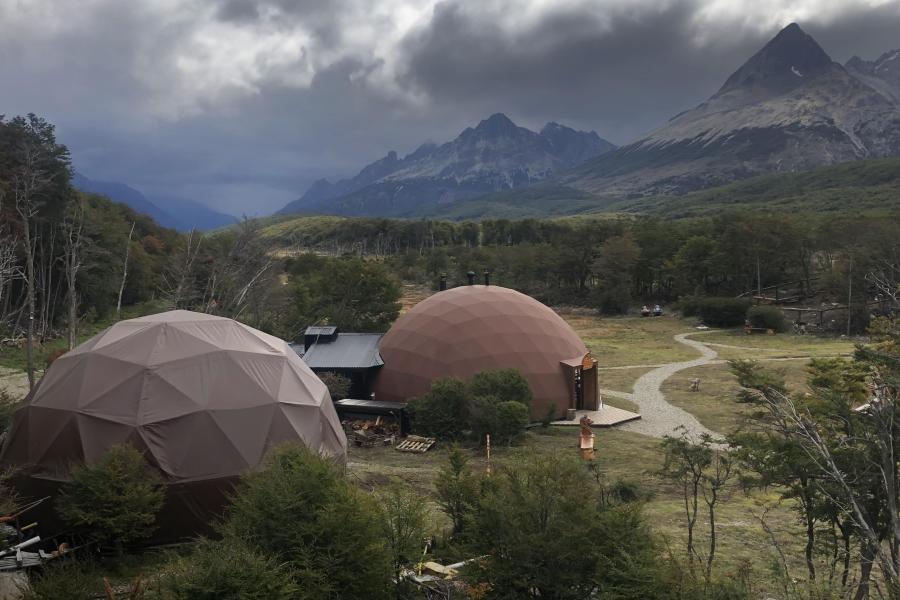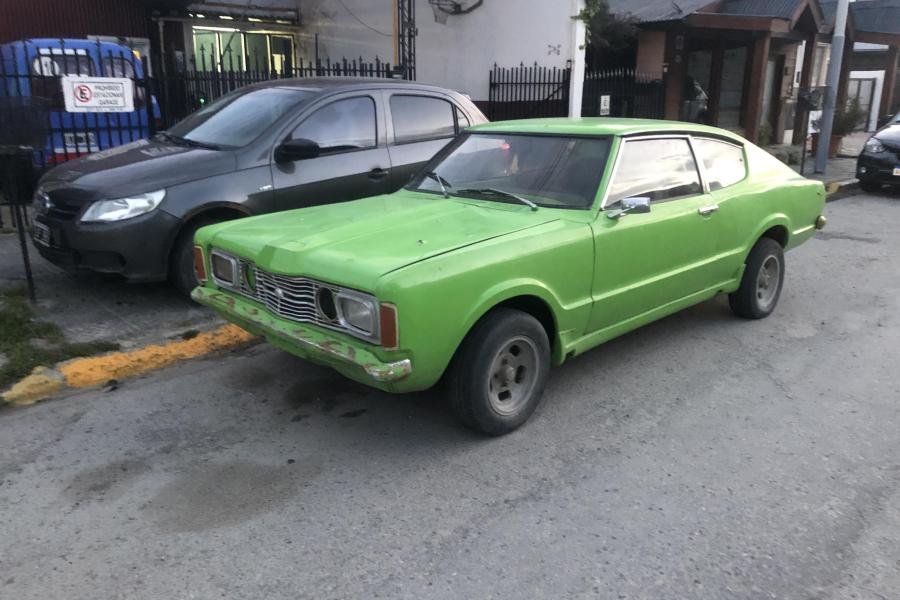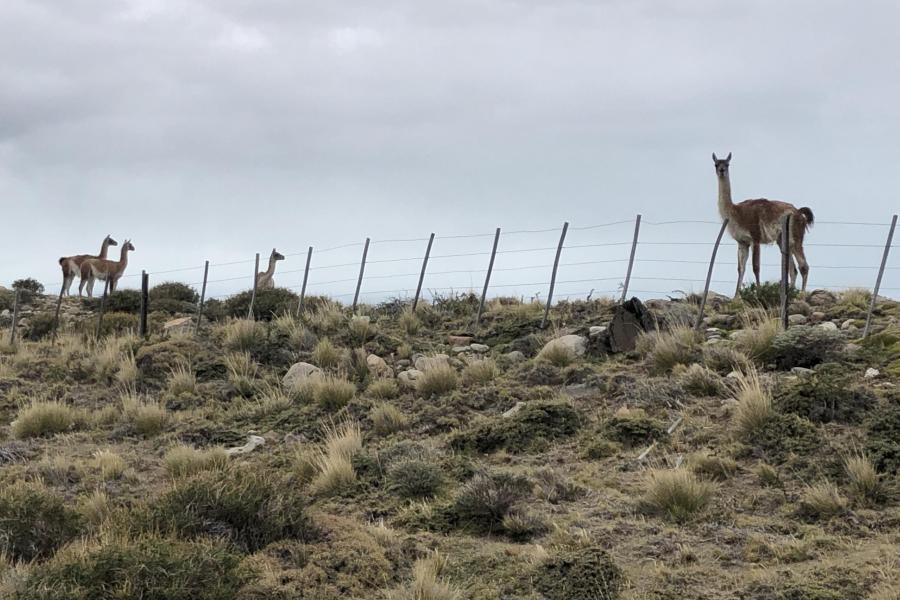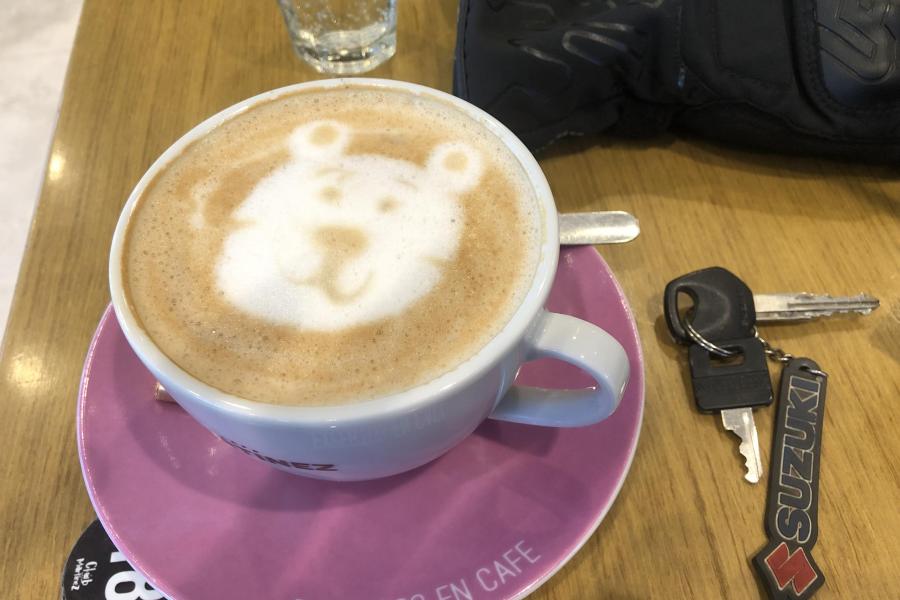The end of the world
Country
The first stop back on RN40 in Argentina was the roadhouse at Bajo de Caracoles. Inside was just like one in Australia - fast food, sweets and drinks, knick knacks.
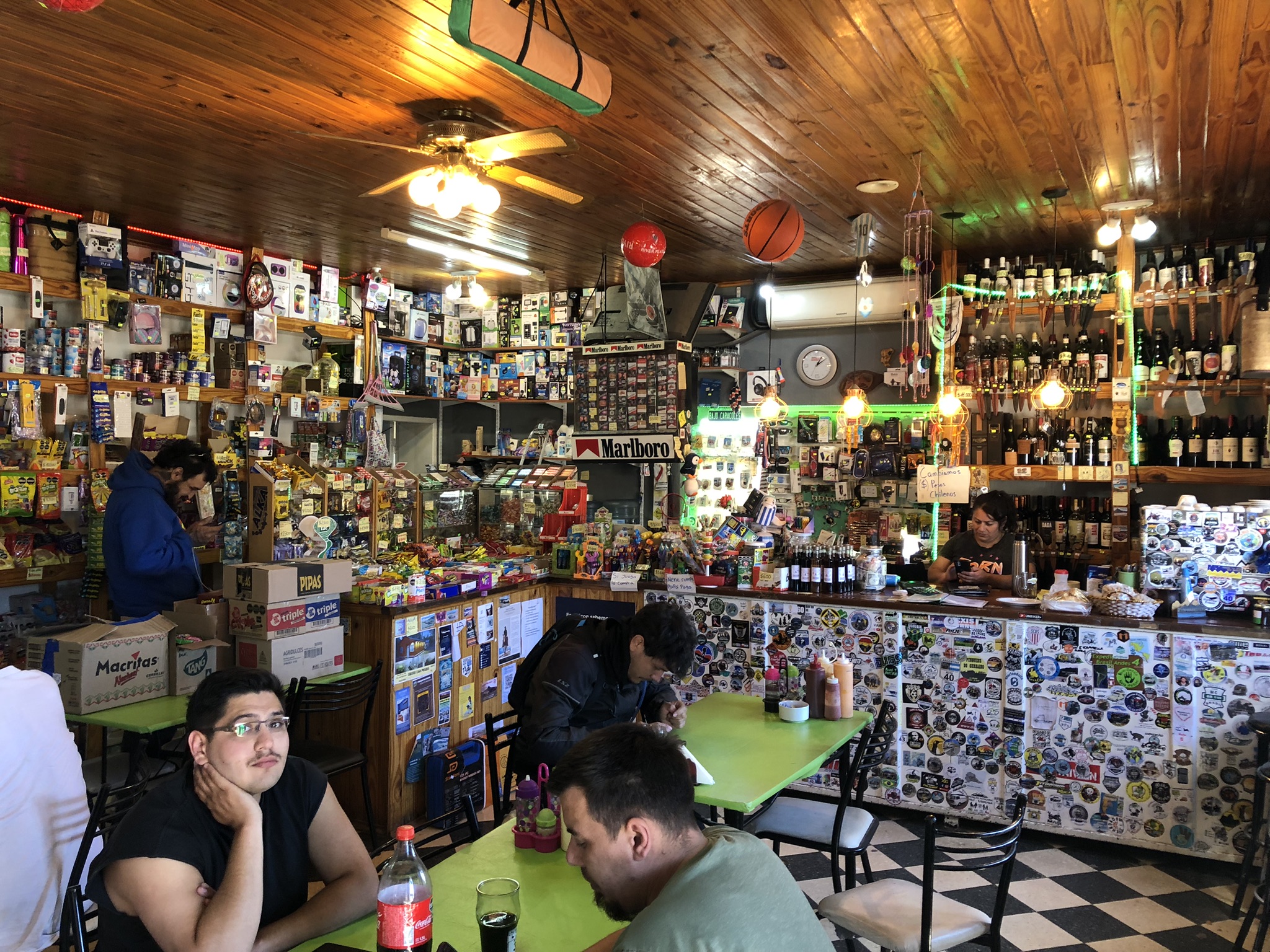
Outside the only petrol pump wasn’t running. A handful of us bikers gathered around, knowing that we wouldn’t make it to the next servo. The owner kept tugging on the belt between electric motor and pump; after half an hour it was back to delivering the good stuff.
Perhaps the pump was overloaded with overlanding stickers. This is seen everywhere - often road signs are illegible.
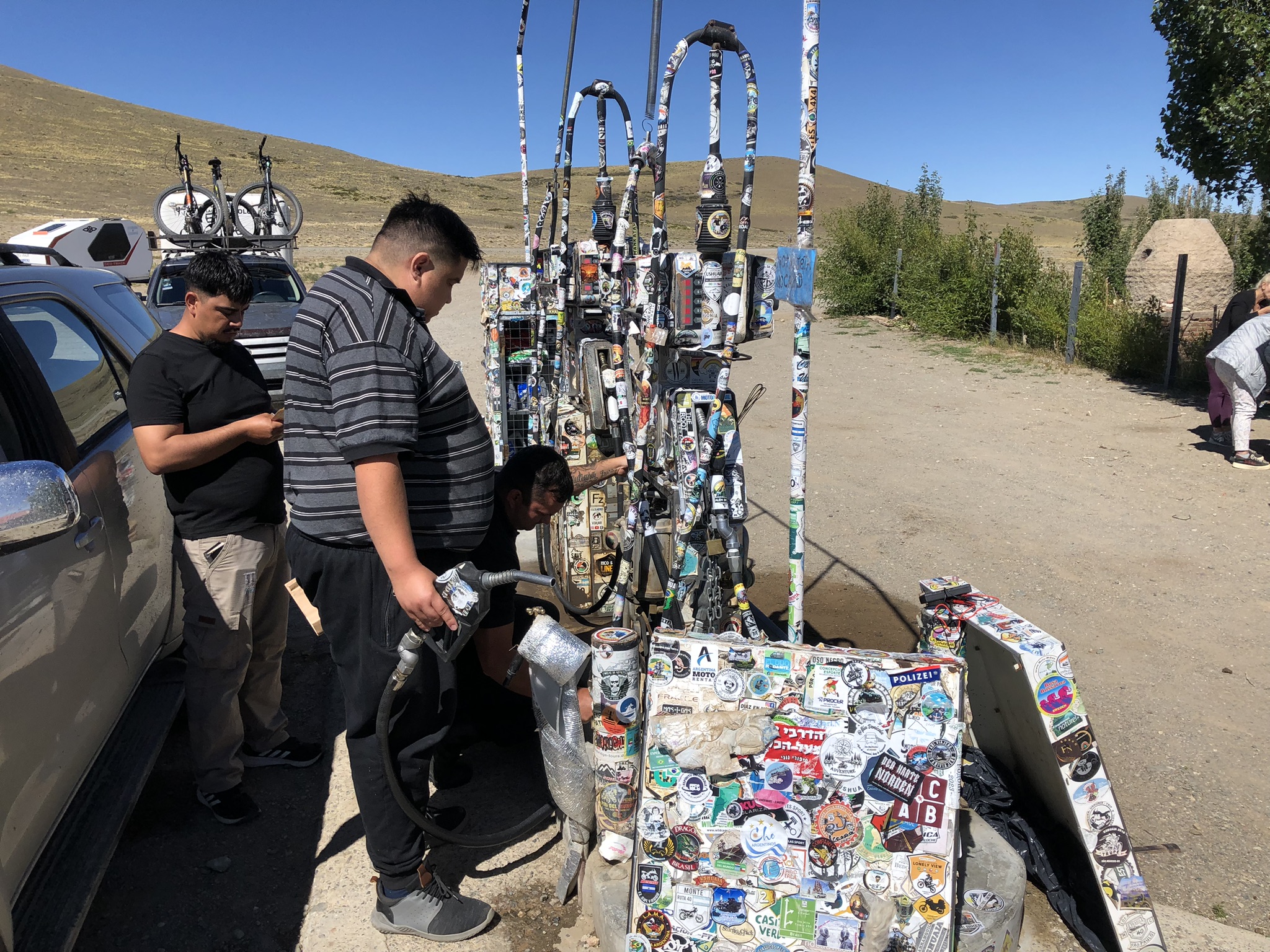
The lower parts of Argentina have hundreds of kilometres of what they call “pampa” which is flat country covered in low dry grasses. Other countries would call it savanna or steppe.
Many complain that it’s days of dullness. I get why this is said, but I still enjoyed it.
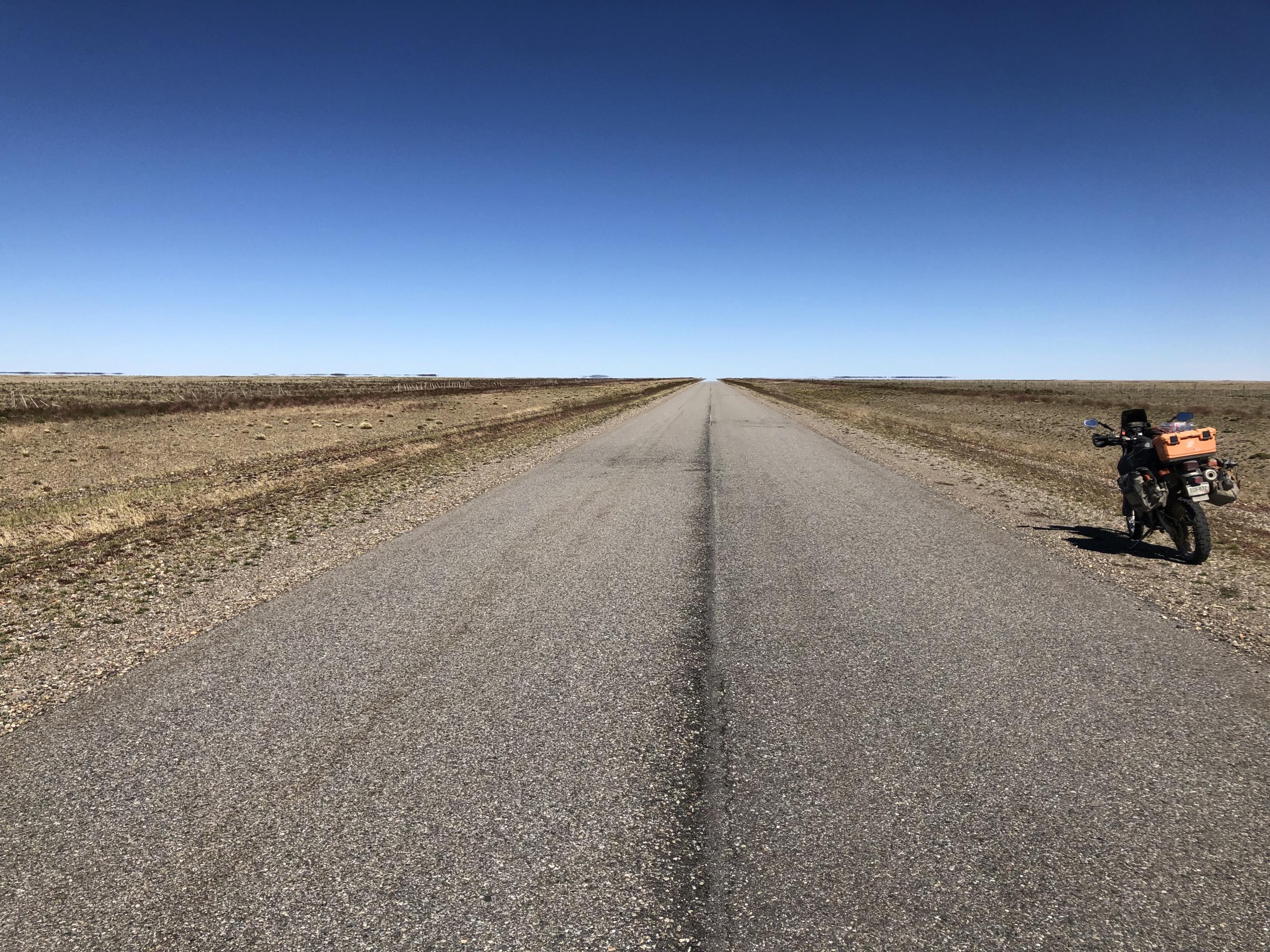
Beyond Gobernador Gregores was a long stretch of often stony gravel. When the wind was up, it needed a lot of attention. I wondered how Thomas had fared there, recalling his hatred of the corrugations in Bolivia.
Days later I learned that section was the “damned 73” - a 73km piece of RN40 infamous amongst motorcyclists for the combination of deep gravel, corrugations and strong winds.
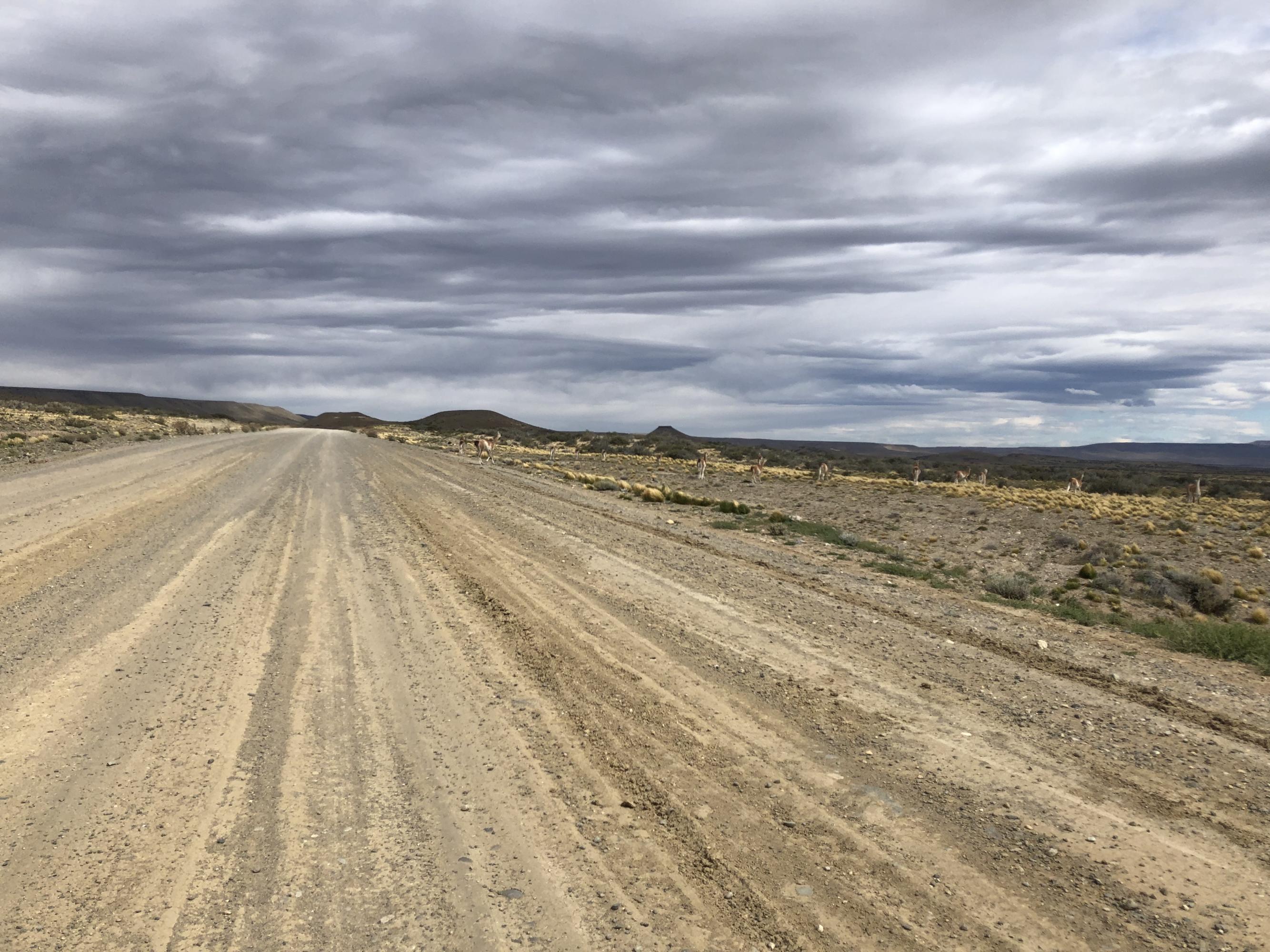
More than one rider had died already in 2024 on it. Some riders hire a local ute driver to transport them over it.
In my ignorance it all seemed okay, just slightly hairy when travelling full pelt on a big lean against the breeze. I was more concerned about another puncture.
Gradually impressive icy peaks came into view. By late in the day it was freezing cold and I couldn’t wait to stop in El Chálten.
It was 6pm on the 28th of February, the calendar said it wasn’t a leap year, Ushuaia was still 1,027 km away. It seemed unlikely I’d make the end of the world by the end of February.
El Chálten exists for visitors to the Fitz Roy mountain and incredible geography around it. Everything costs a packet. It was upsetting paying $100 for the simplest room in a hostel.
That first night I met Cecelia, a hotel receptionist, and her golden retriever Maddy. She assured me that was a good rate.
The main activity in El Chálten is hiking and the main route is to Laguna de los Tres. Most walkers start from the town itself. Having my own transport was a win as I could ride 13km beyond town and take an alternate path.
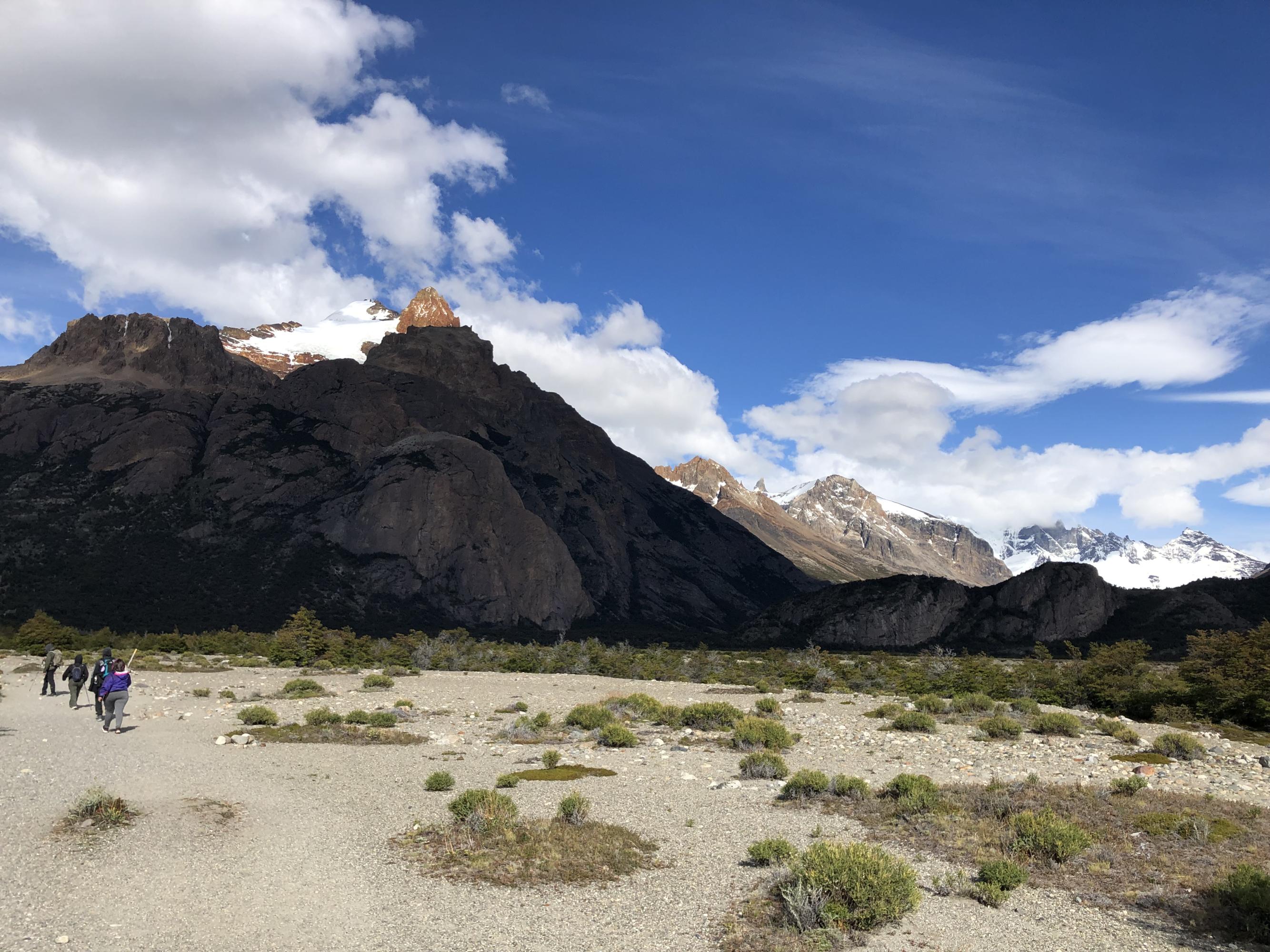
This was far less populated, so much so that I had a conversation with most people I met. Two ladies were also heading to Ushuaia then sailing to Antarctica. They urged me to investigate last minute deals to the icy continent.
This couple were great ambassadors for their home city, Buenos Aries. They were on a five day holiday while the capital celebrated Carnival.
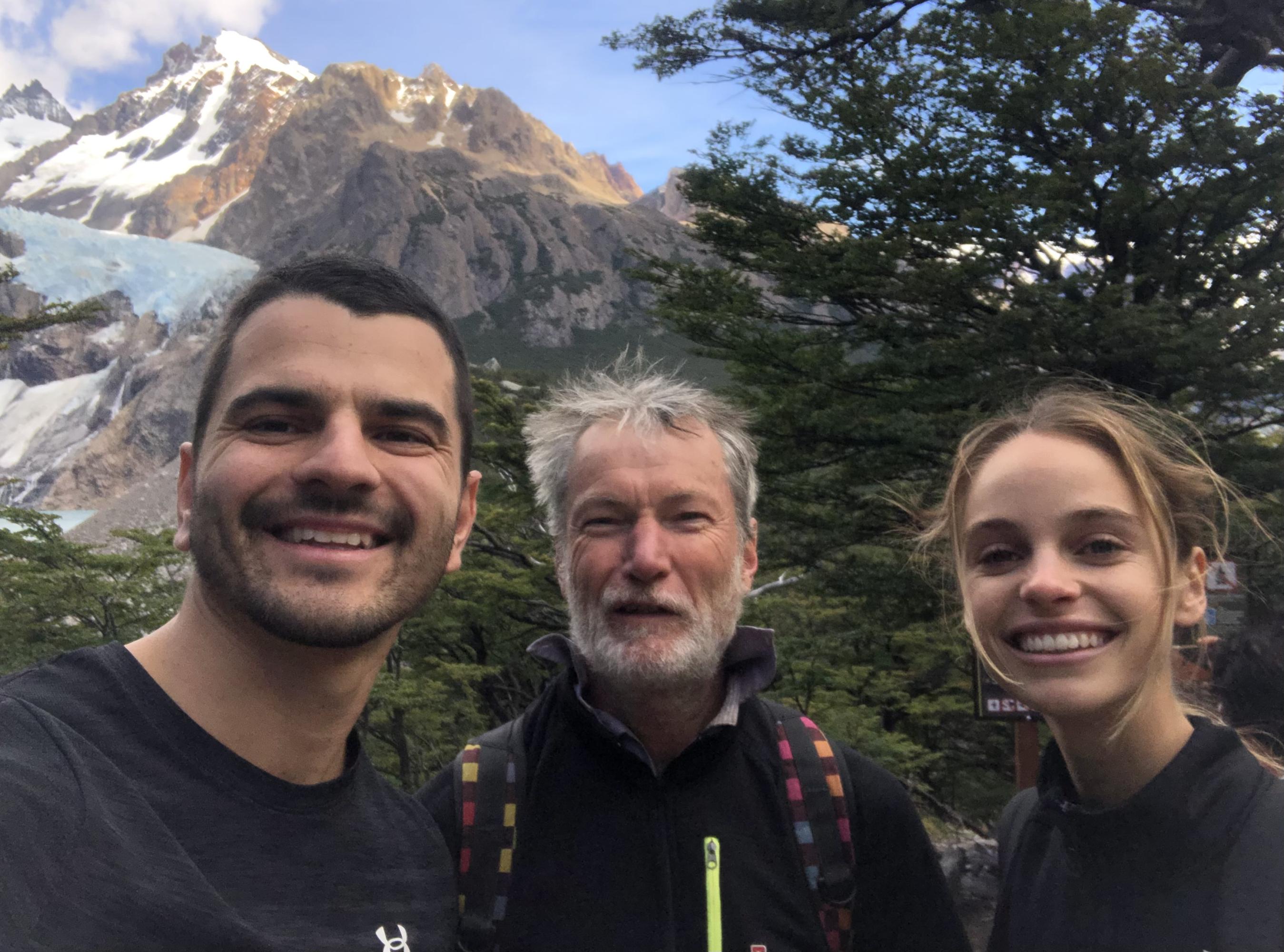
We passed the Piedra Blanco glacier, which made thunder like sounds when the ice cracked.
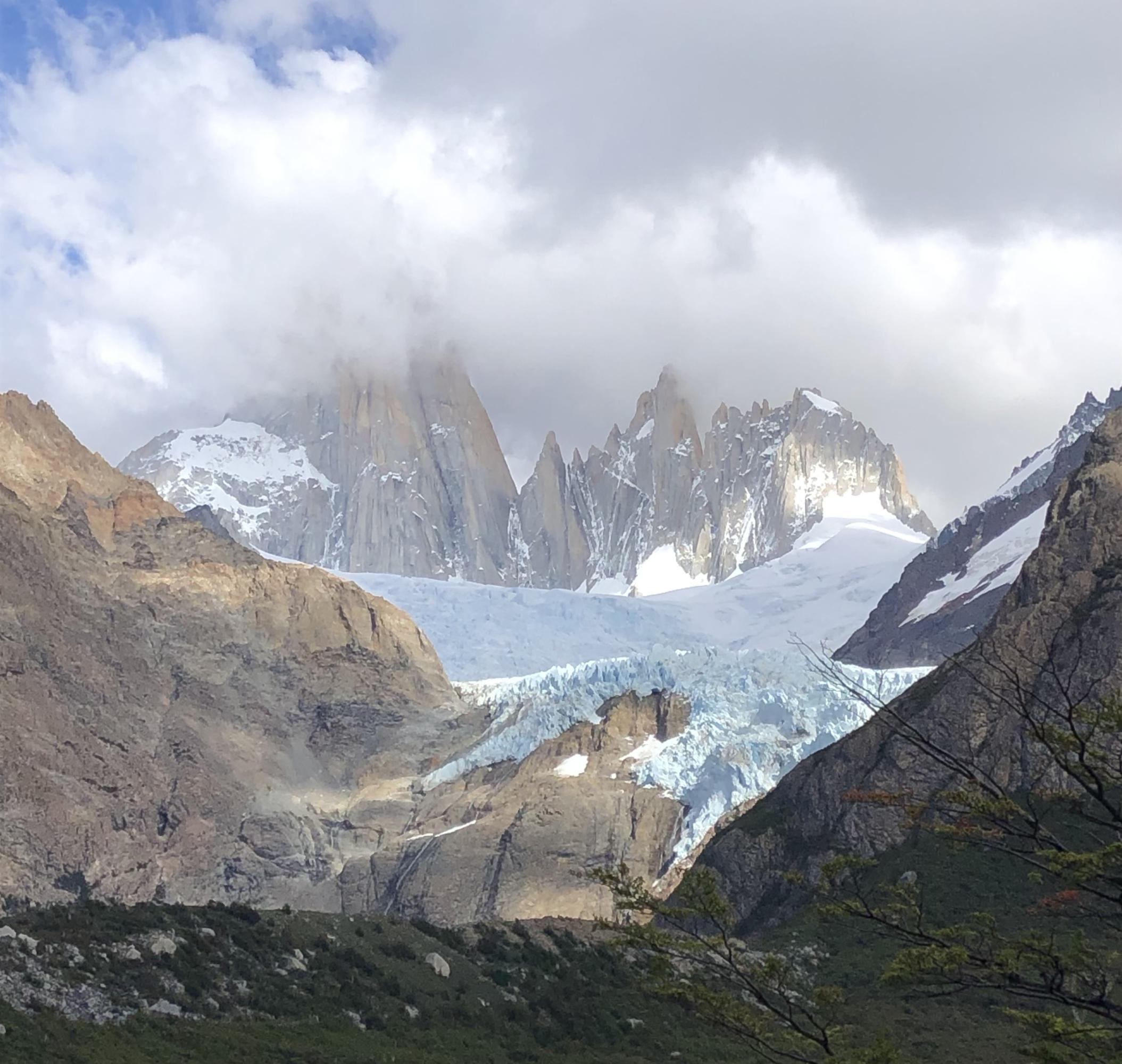
At the junction with the main path was a nice looking little campsite.
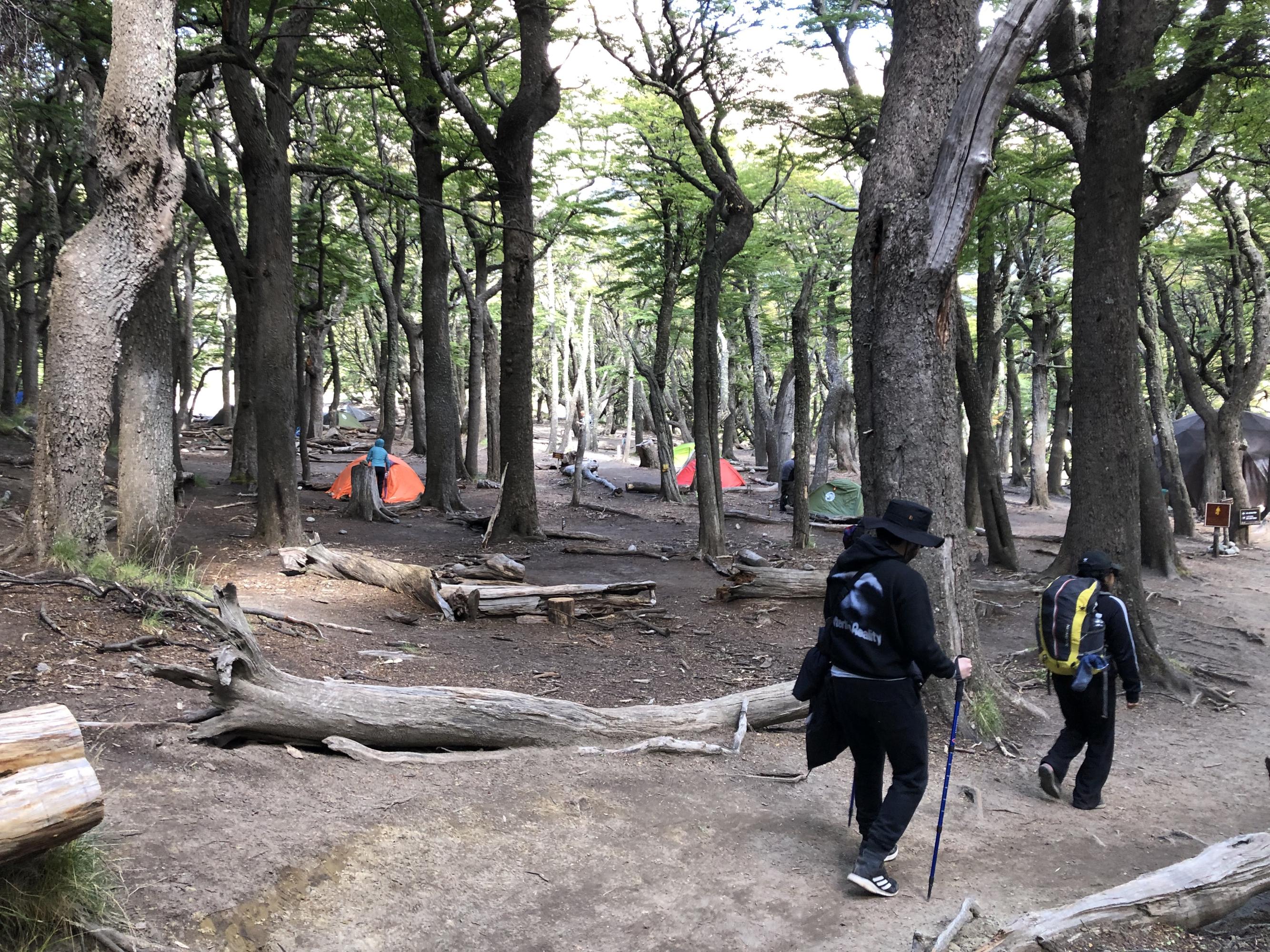
From there was a strenuous rock hop ...
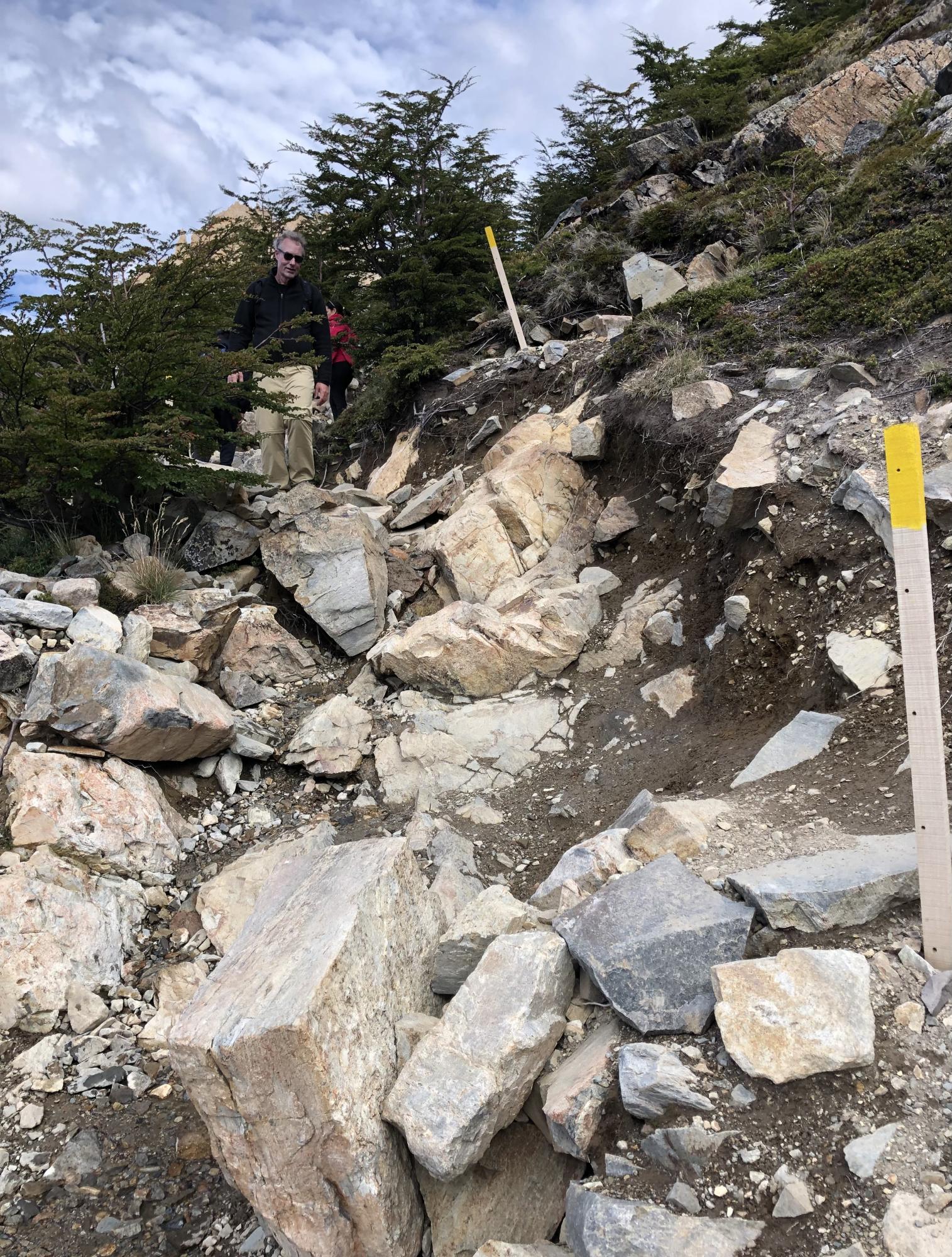
... until the prize: two beautiful lagoons fed by melting snow. Behind them was the peak of Fitz Roy, often hidden in mist.
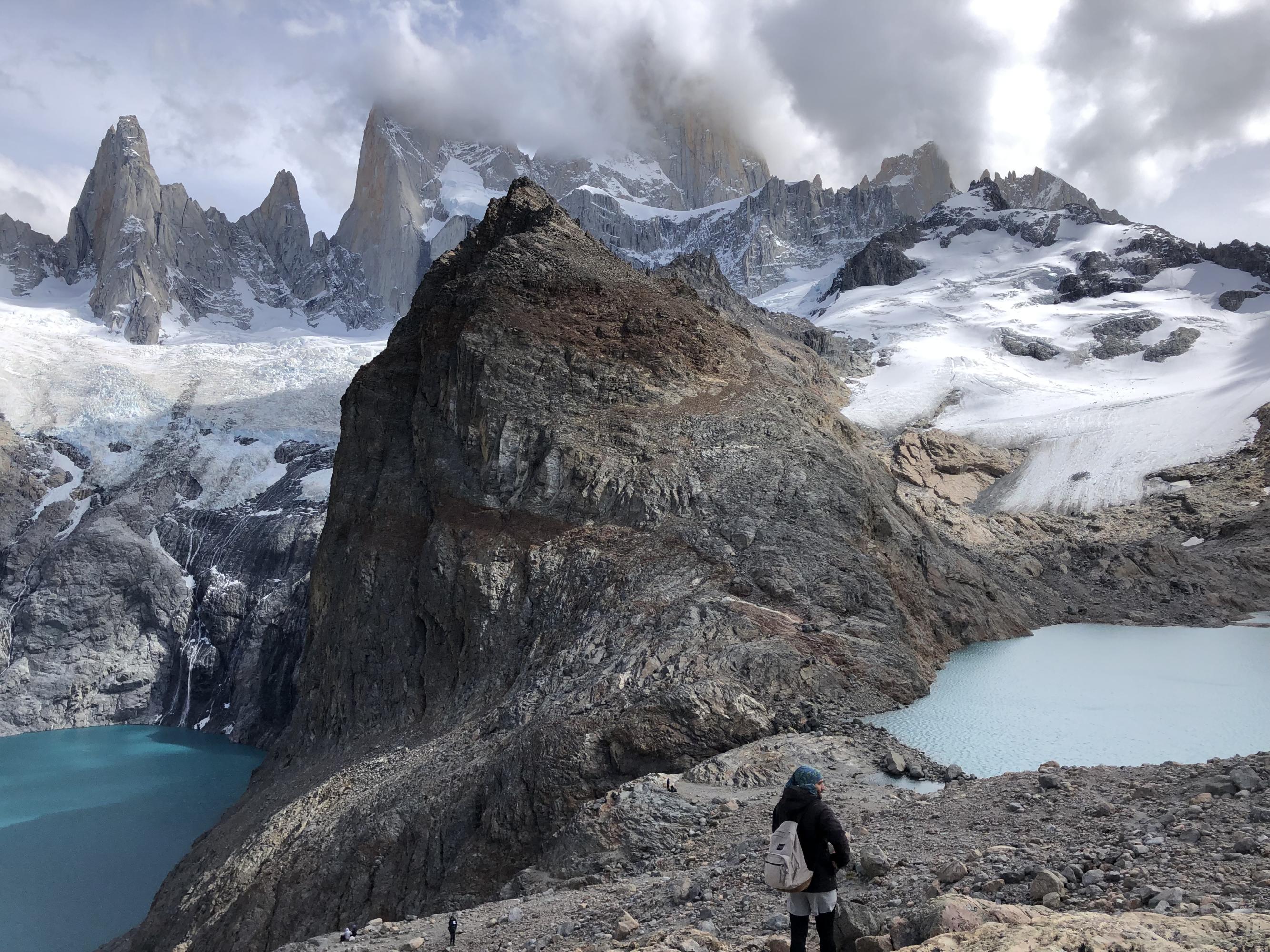
It bent the mind to imagine that this was just the edge of the great southern ice field. Beyond were over 16,000 square km of white stretching all the way west to the fjords of the Patagonian channel on the Pacific side and 350km top to bottom.
One lovely aspect of Argentina and Peru - minimal litter. A stark contrast with most other countries where once you’d arrived in the most amazingly beautiful spots there would be piles of crap.
Like the rest, I soaked up the splendour while chomping (chicken empanadas and “facturas” - decadent sweet pastries).
Leaving El Chálten the next day it was in gloomy rain. I was glad the conditions had been pleasant for five hours walking the day before.
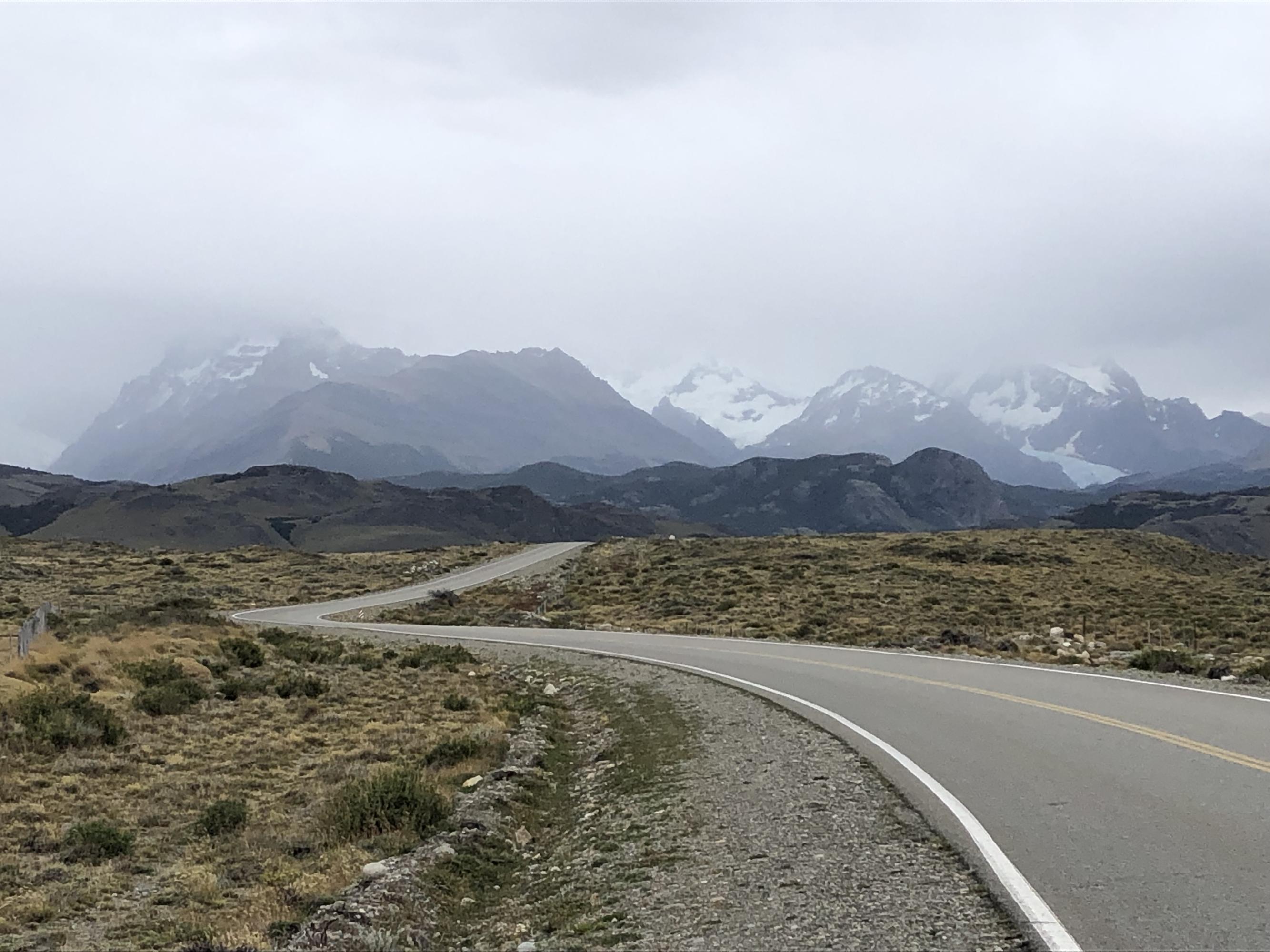
214km of easy gently curving tar lead to El Calafate.
My hostel host Eugene was enthusiastic with suggestions. The main attraction was the Perito Moreno glacier 80km away. Most tourists go directly there. Since I had a dirt bike, taking a longer route would be worthwhile.
He was right. Super smooth gravel got me to a lesser visited portion of Los Glaciares NP.
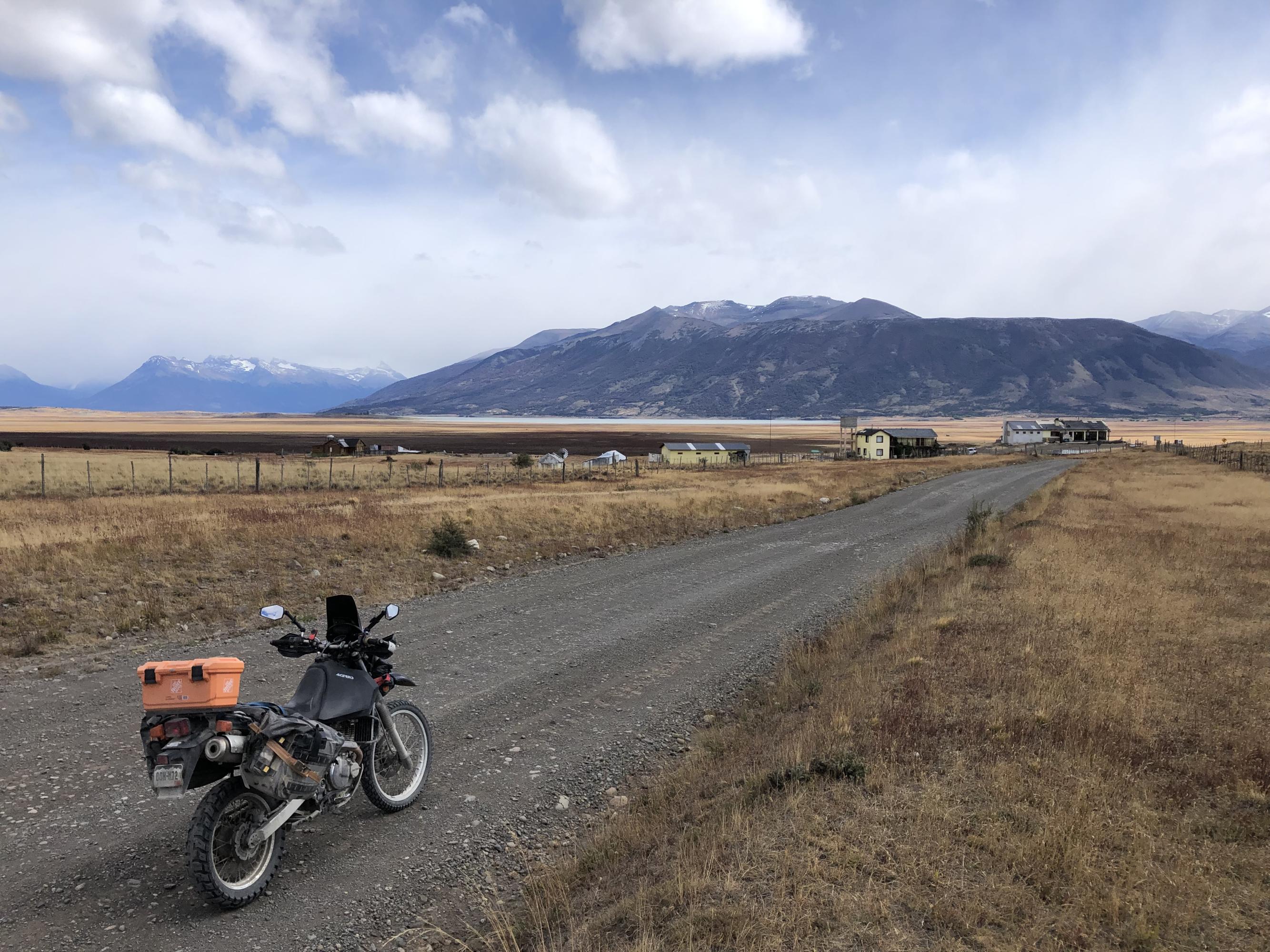
The ranger there was just as helpful. I took up his idea of a brief walk to a lookout point.
No one else was around. It was a magic spot to see Porito Moreno far away, a mix of lakes and craggy mountains, all while scoffing lunch.
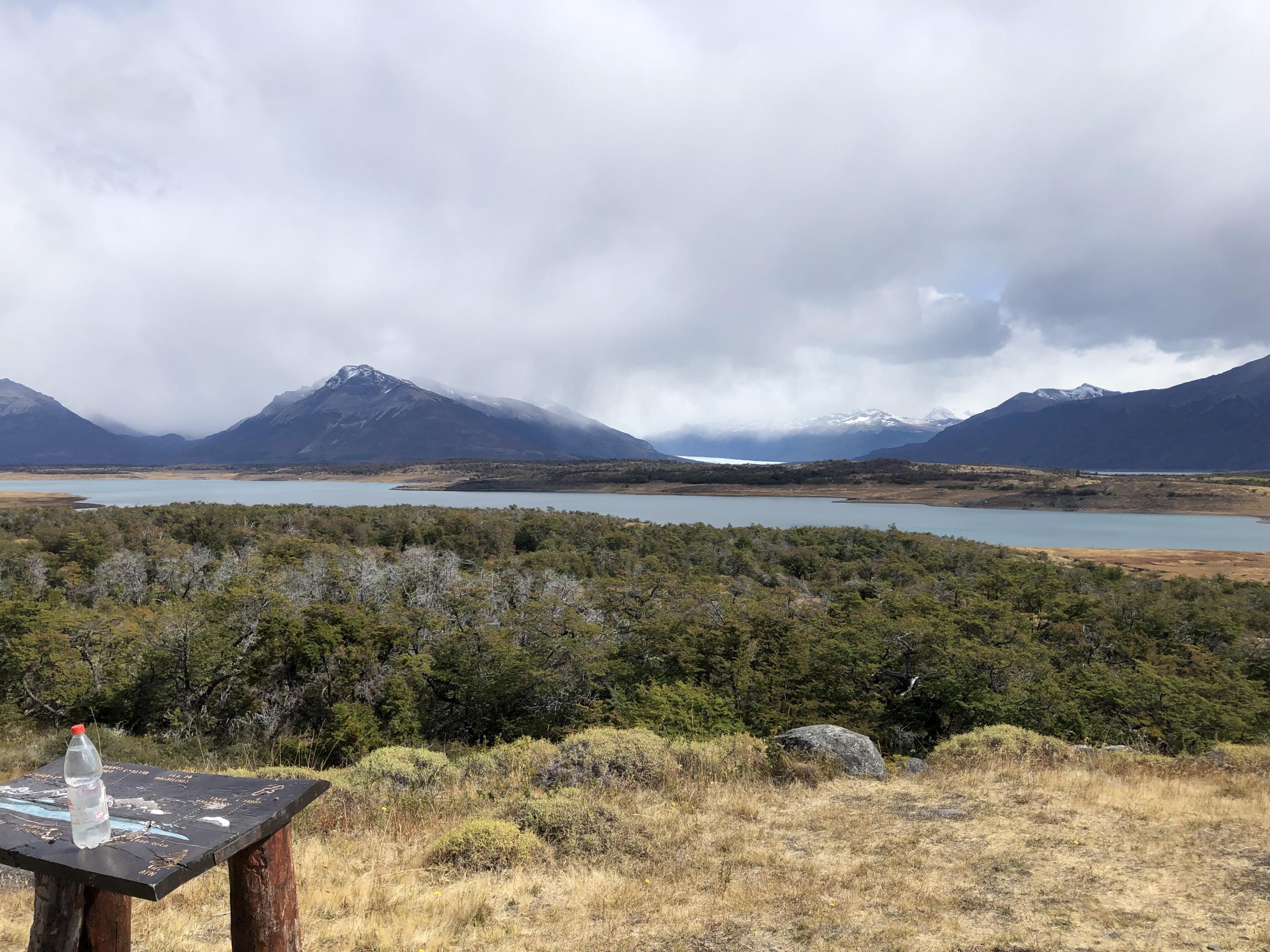
Entry to Perito Moreno itself was $60 for a foreigner - pretty steep for the time spent there, but fairly common for the big ticket spots.
One can view the glacier from a boat or even hike on it at considerable expense. I’d been advised that just looking from land was enough.
Wow, it’s a big chunk of ice.
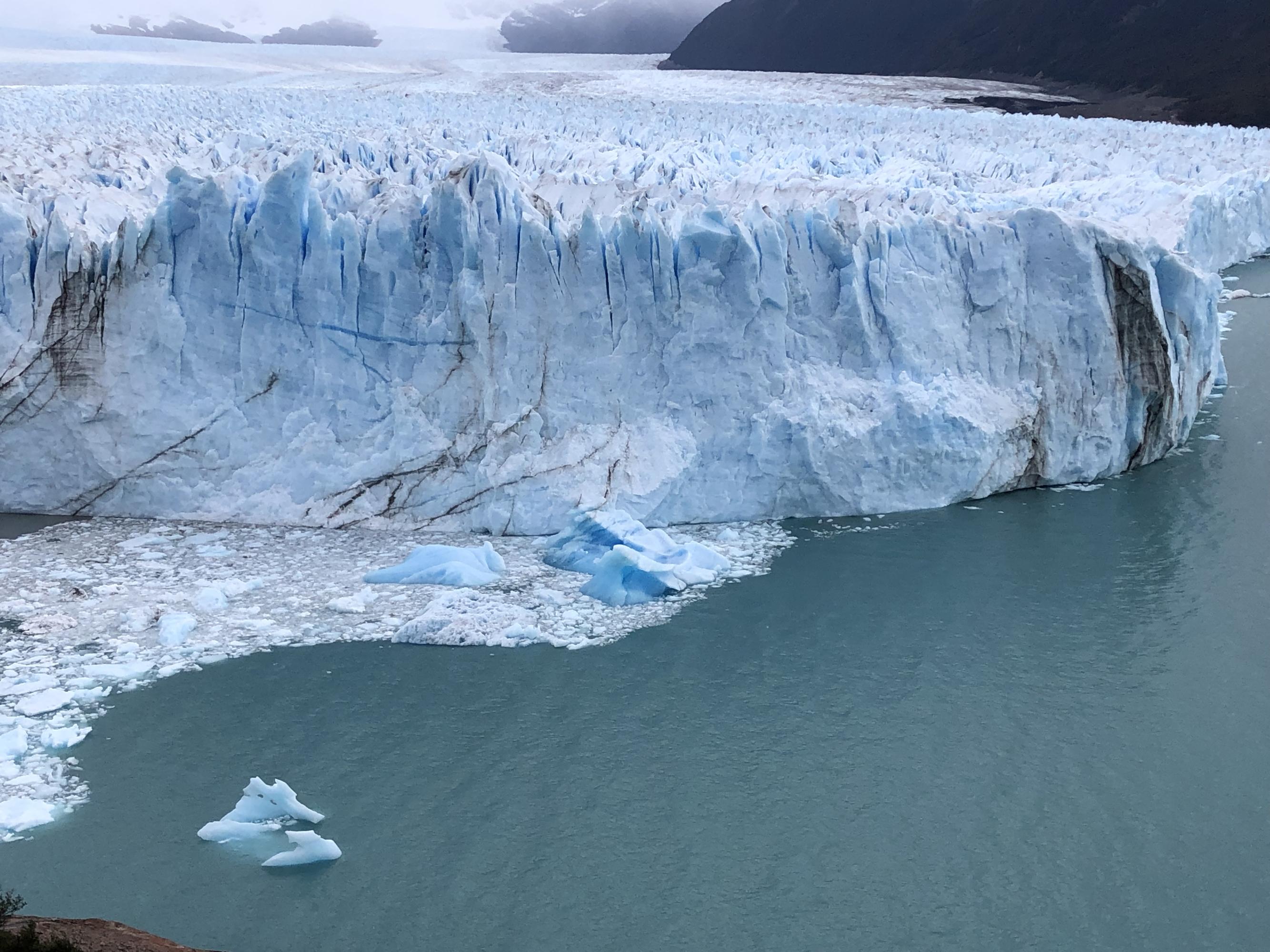
It flows into Lake Argentino. Extensive metal board walks are immediately opposite the ice. They total almost five km, giving a variety of viewing angles.
Chunks of ice calve every few minutes. Cracking sounds alert to pieces coming off, often followed by splashes and waves. Cameras would click to a collective audience “oooh”.
Here the mental image of a vast ice field was easier to conjure. It was obvious the glacier is flowing with a sloping top side.

You’re going to get bored reading about wind. Sorry about that. It’s sometimes strong and constant, sometimes dangerously blustery, sometimes not there at all.
Blasting back into town it was constant, which is always easy to ride with, the bike leaning over what feels like a lot. It’s hairier when it changes quickly. One moment the bike is on an angle mid lane, the next moment the breeze drops, the bike suddenly heading either for the ditch or that oncoming Kenworth.
Loose gravel with even a constant stiff breeze can be challenging. It’s too easy to tense the arms, which strangles the steering. I got into the habit of rolling my shoulders to force relaxation, a kind of a physical mantra.
At La Esperanza I met Herman from Buenas Aires on a KLR650. He suggested we ride together since it was dangerous with the winds. I found it especially difficult to communicate. Chileans and Argentinians talk quickly with their own accents and idioms. Further, Herman’s response to me not understanding was to talk even quicker and louder. This was common ... but not so useful.
In Rio Turbio we shared a hostel with Hans, who remembered me from Bajo Caracoles.
Herman offered “maté”, an Argentinian tea high in caffeine, often shared socially. Read all about it here. It’s served in a special mug (also called a “mate”!) with a special filtered straw. Car drivers drink it on the go, service stations have hot water dispensers for it. It’s a big deal.
I found it’s an acquired taste.
The impromptu mateship of motorcycle riders is warming. We three combined for the crossing back into Chile.
Near Puerta Natales we fist bumped and went our own ways.
Puerta Natales is a medium sized port city. The place looked uninvitingly freezing coming in that day with white caps in the Señoret Channel. Numerous cruise ships dock here and Punta Arenas, one day away by land.
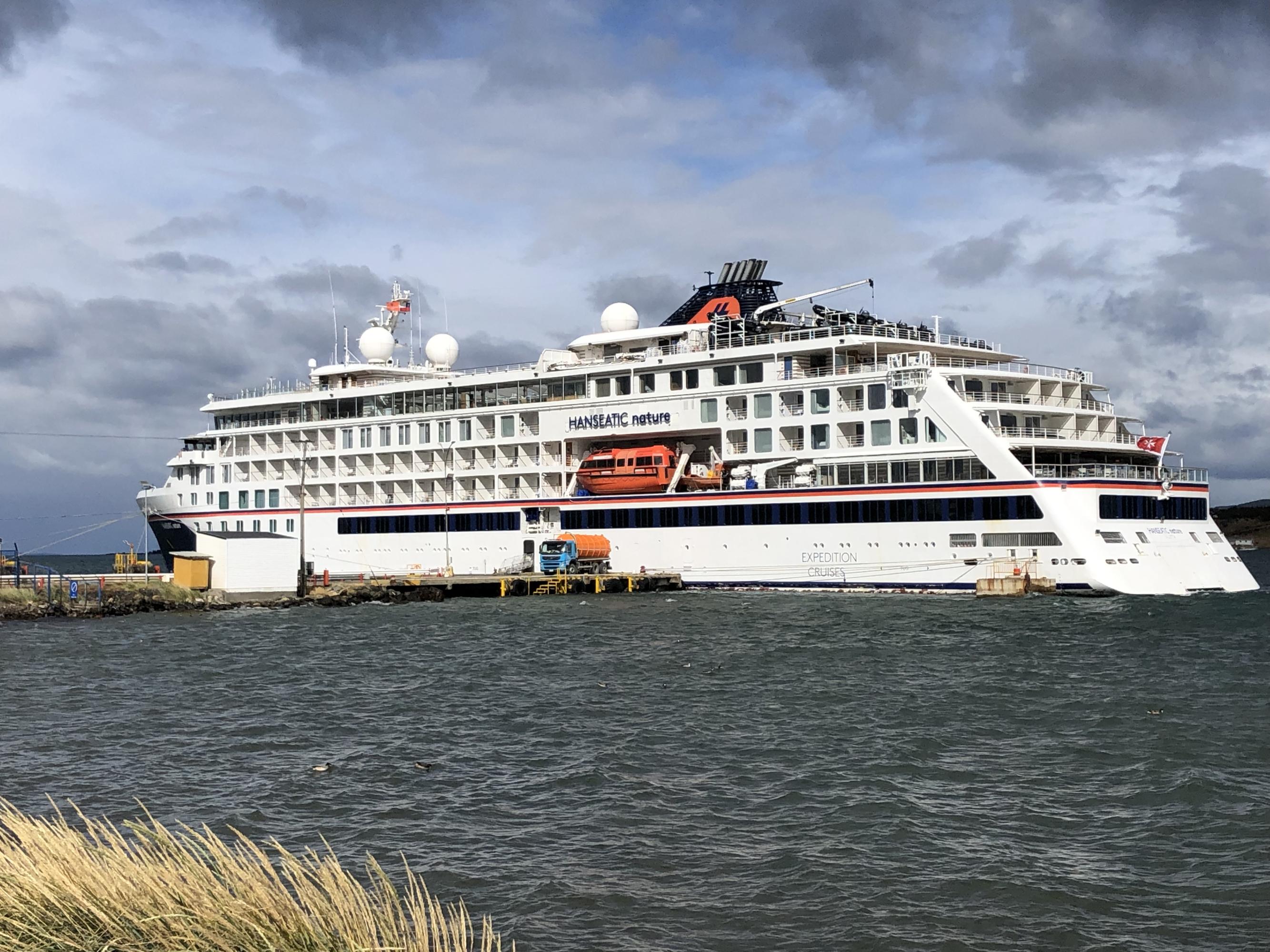
Thomas and fellow Christmas diner Filip from Poland were leaving town that day. They were taking a two day ferry through the fjords back to the Carretera Austral that evening. We caught up over coffee. They’d been moving together since just after Thomas and I split in Bolivia, getting to Ushuaia and now returning north.
It was ace having a few laughs together.
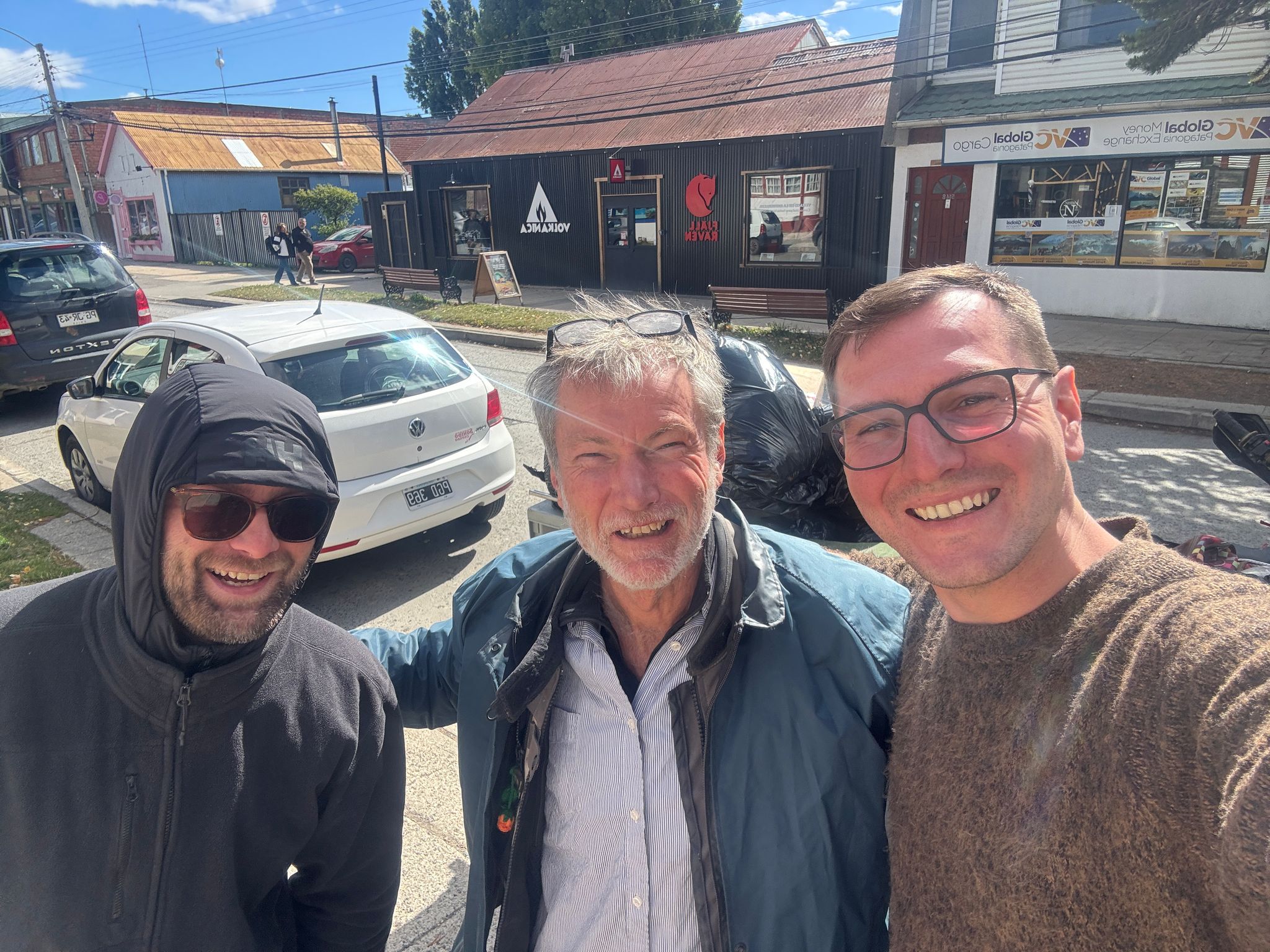
Eventually it became time to shake hands and make my own way to the end of the world.
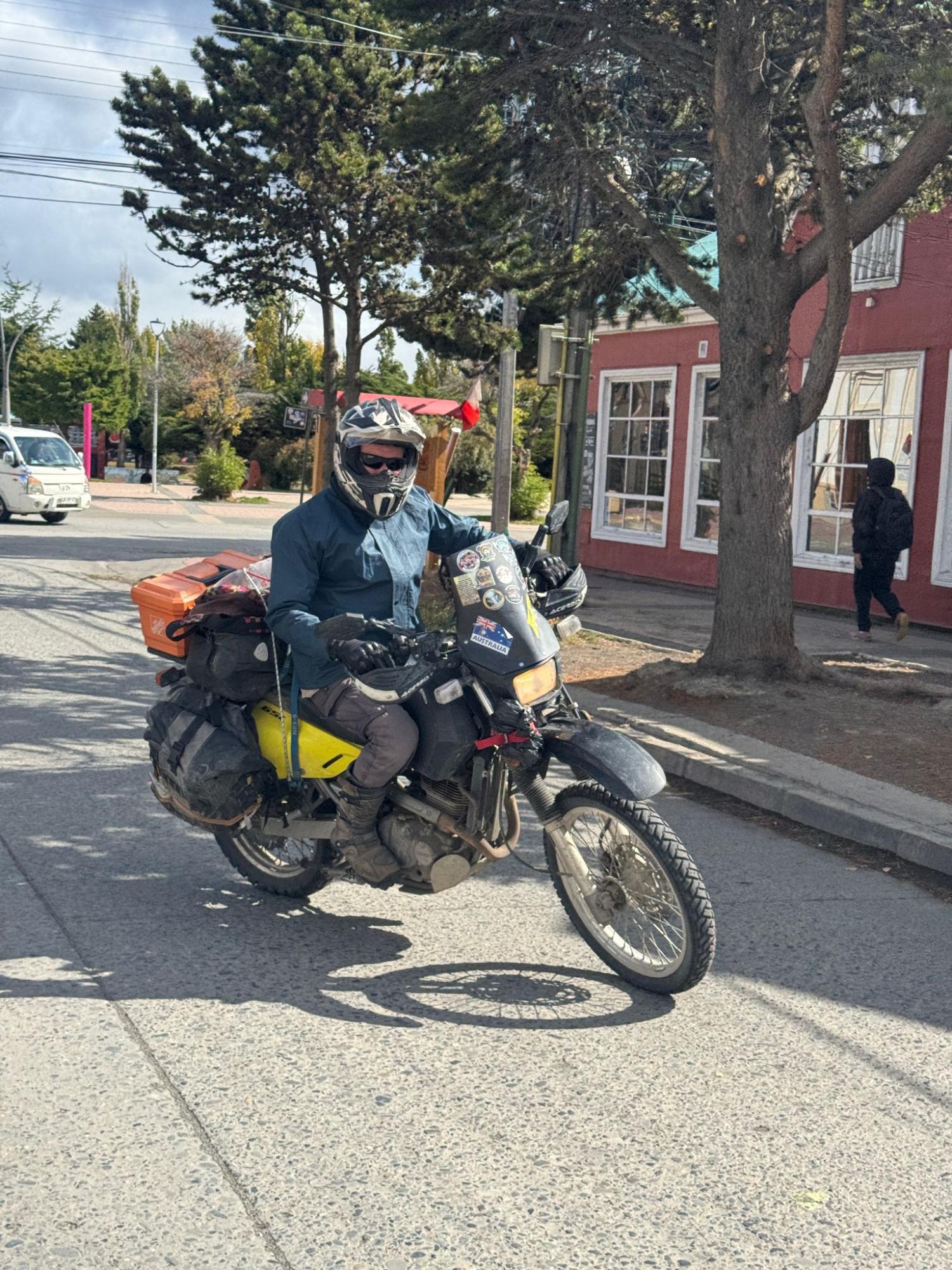
How about this - a pair of Colorado plated Bush Pigs!
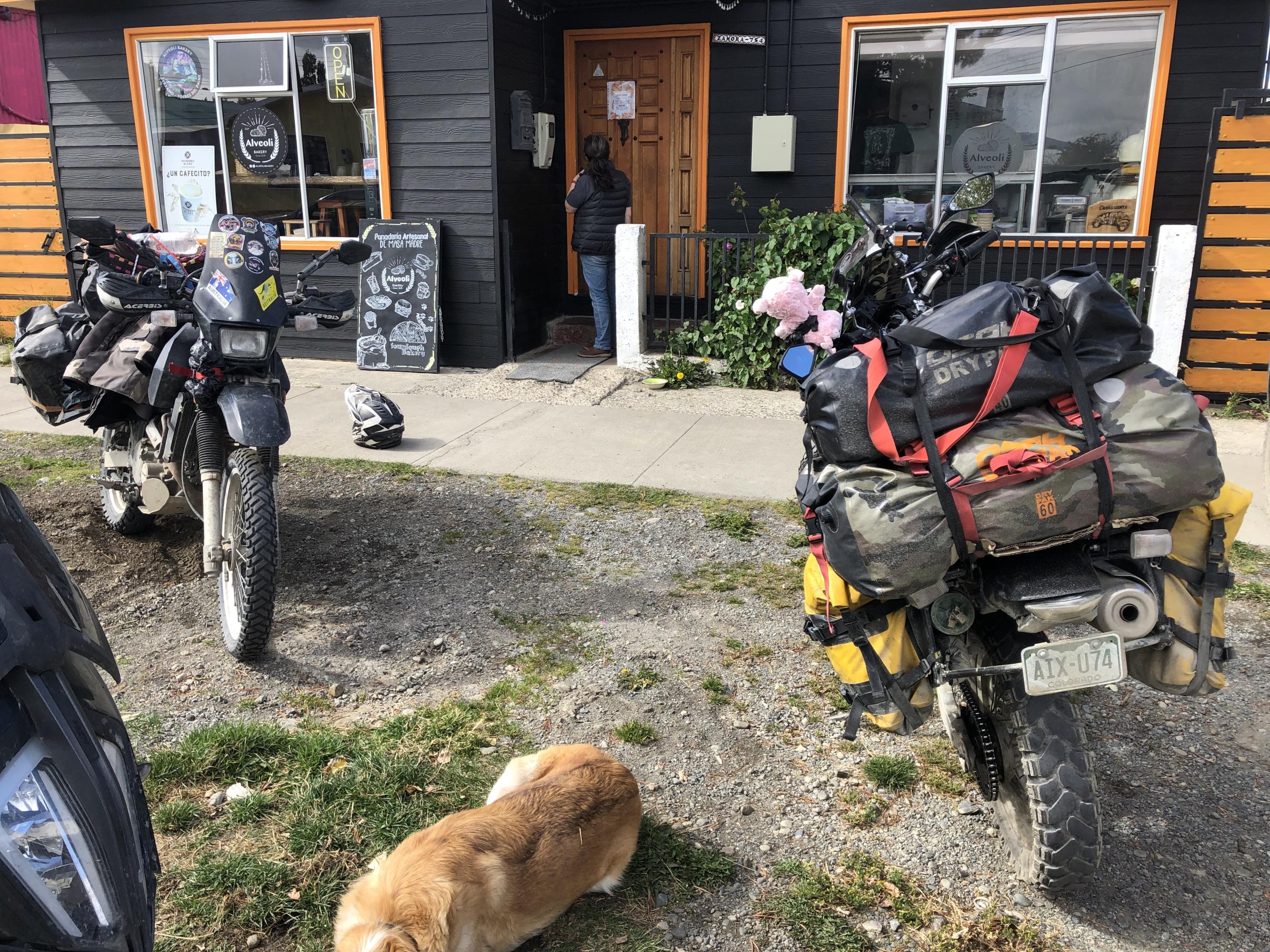
Days were often charming when stopped, bloody cold on the move. Wrapped up with all the layers was the go - upstairs thermal top, shirt sleeved shirt, long sleeved shirt, skivvy, riding jacket, rain jacket, neck roll and downstairs jocks, thermals, jeans, rain pants. It was comfortable with the occasional chill at wrists or neck.
At one remote windswept roadhouse I grabbed a coffee to warm up.
A minibus paused for a handful of blokes to have a fag and a cold beer outside. I couldn’t imagine a chilled cerveza at that point.
I wondered what the Argentinians were monitoring here. There were over forty domes.
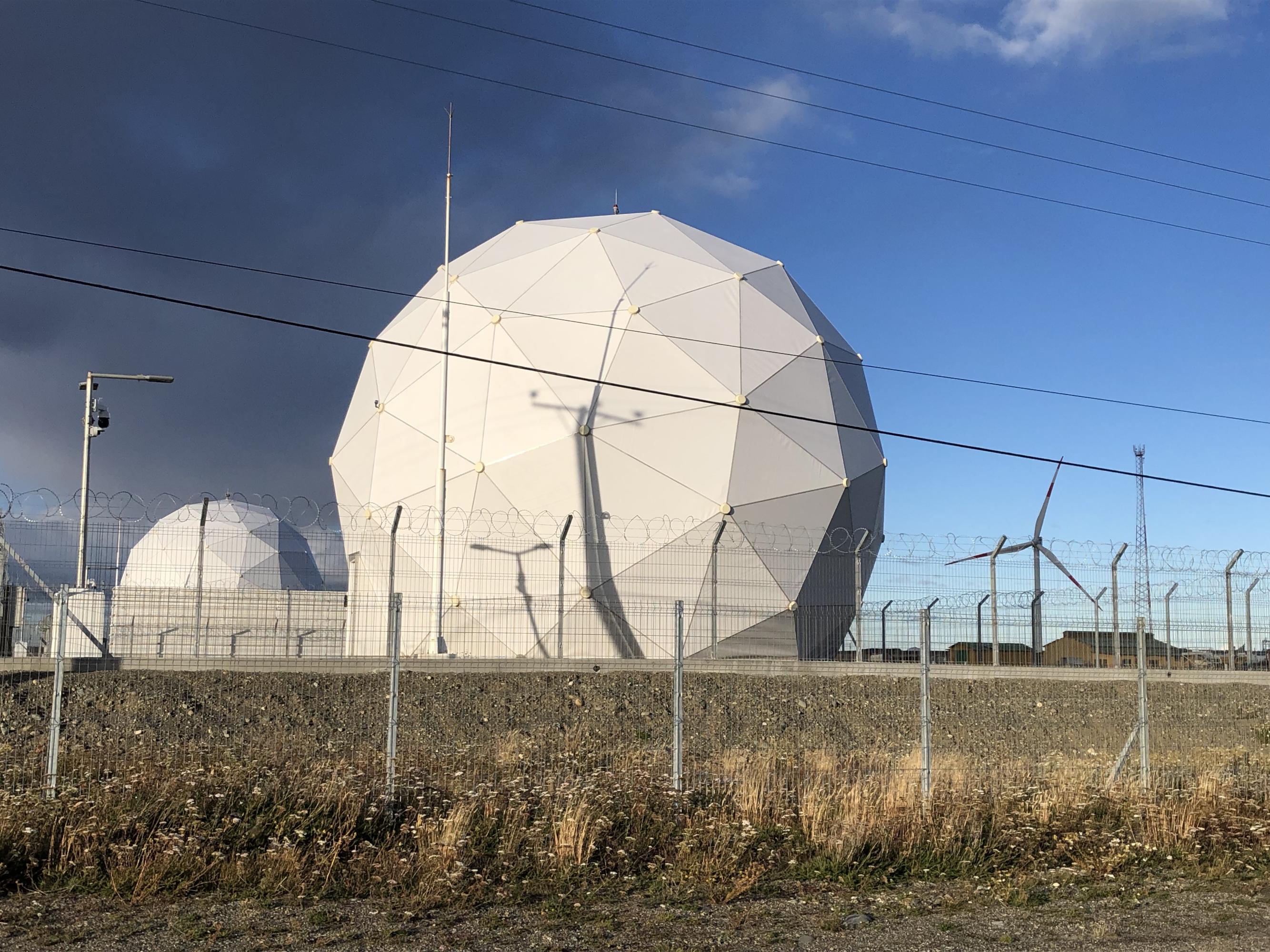
When Kim was a little tacker, she and I constructed a geodesic dome in our lounge room, big enough for her to sleep inside. I'm tipping these ones were not made of newspaper, toothpicks and masking tape.
Argentina and Chile had a reasonable number of camp spots, but boy it had become cold overnight.
This spot next to the Strait of Magellan was pretty in the morning sunshine. It encouraged sitting back with a book.
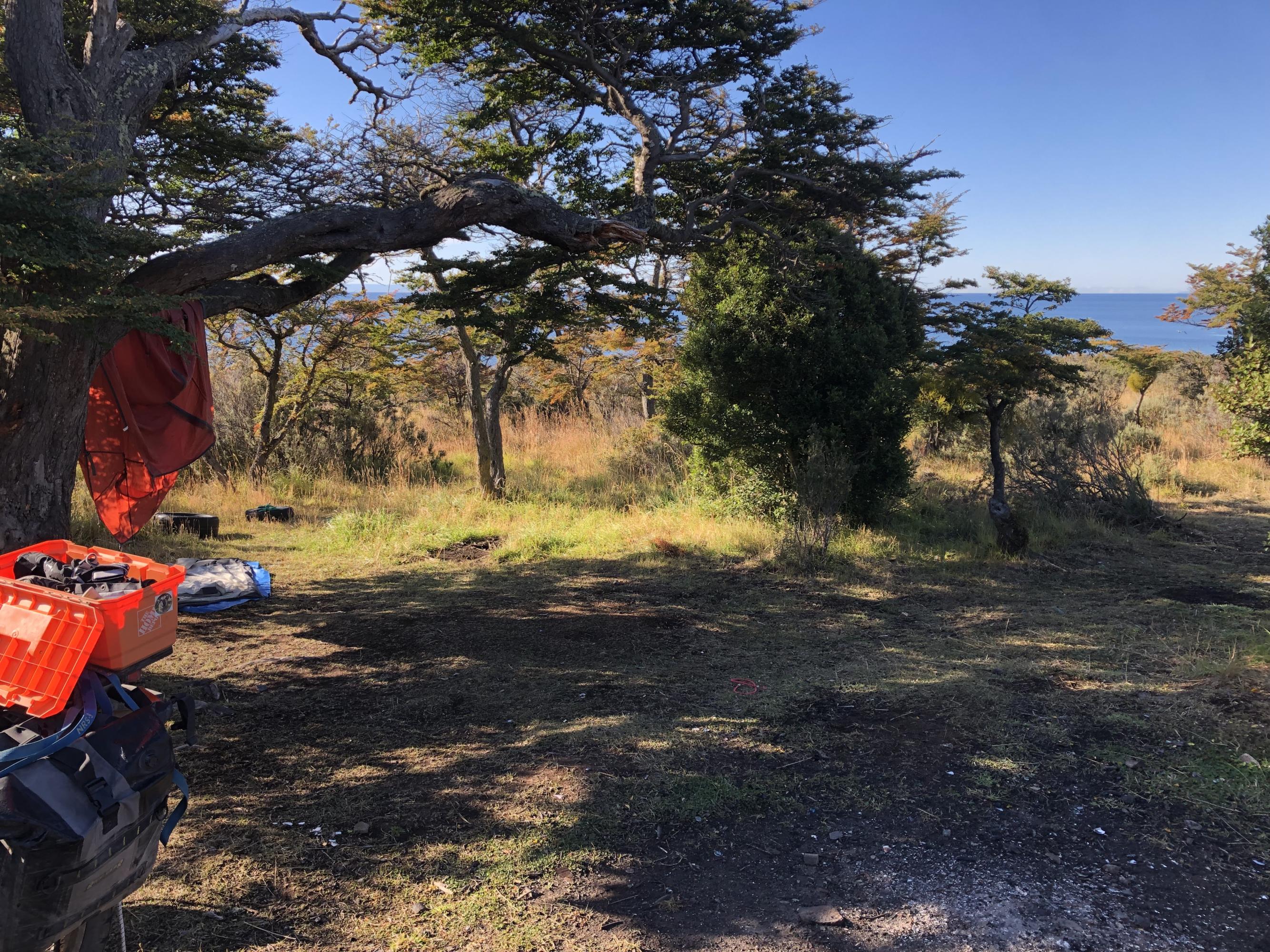
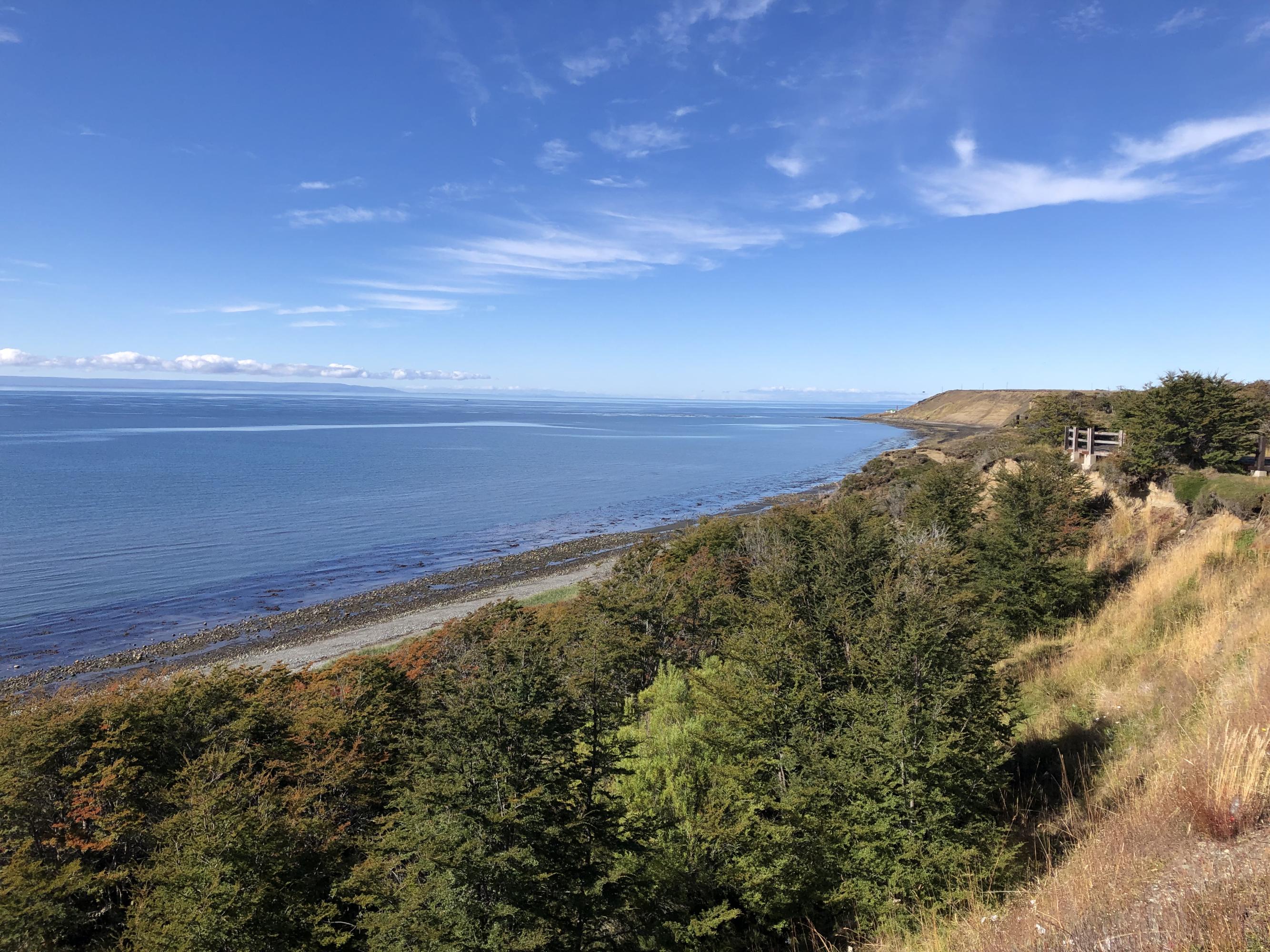
A saddlery / leather goods store gave me a big win by replacing the jacket zip slider. How long to fix? I asked. My lady stretched out all digits on one hand. Five minutes. Two minutes later it was ready.
She gesticulated lifting the zip away from my body when zipping up. Only after that did I notice the flap underneath catching in the zip. It had formed a fold, so always wanted to snag.
How stupid and fundamental a problem - I should have noticed it from the get go.
Still, a win.
Suddenly the speedo wasn’t working after a wash. Roadside I pulled out the cable (the usual problem) but it was fine. Next removed front wheel to discover the worm gear flopping around, disengaging from the spur.
For the whole trip a spare front inner tube had been strapped next to the headlight. Relashing it in place I started to tighten the strap around the speedo cable. Aha! Most likely I’d done the same thing post wash yesterday (I had removed the tube for the wash), maybe forcing the inner cable to run hard against the sheath. This probably loaded the drive gears too much and cracked the worm mount/bearing.
Not having road speed doesn’t matter. The worst is that the trip meter is my fuel gauge. Less importantly it wouldn’t be as credible selling the bike not having a functioning odometer.
Ushuaia lies at the bottom of Tierra Del Fuego, an island. After the ferry ride over, it took two days to cross the island and reach Ushuaia. For the first time in ten months, I got bored/frustrated with the countryside. It was mostly plain pampa.
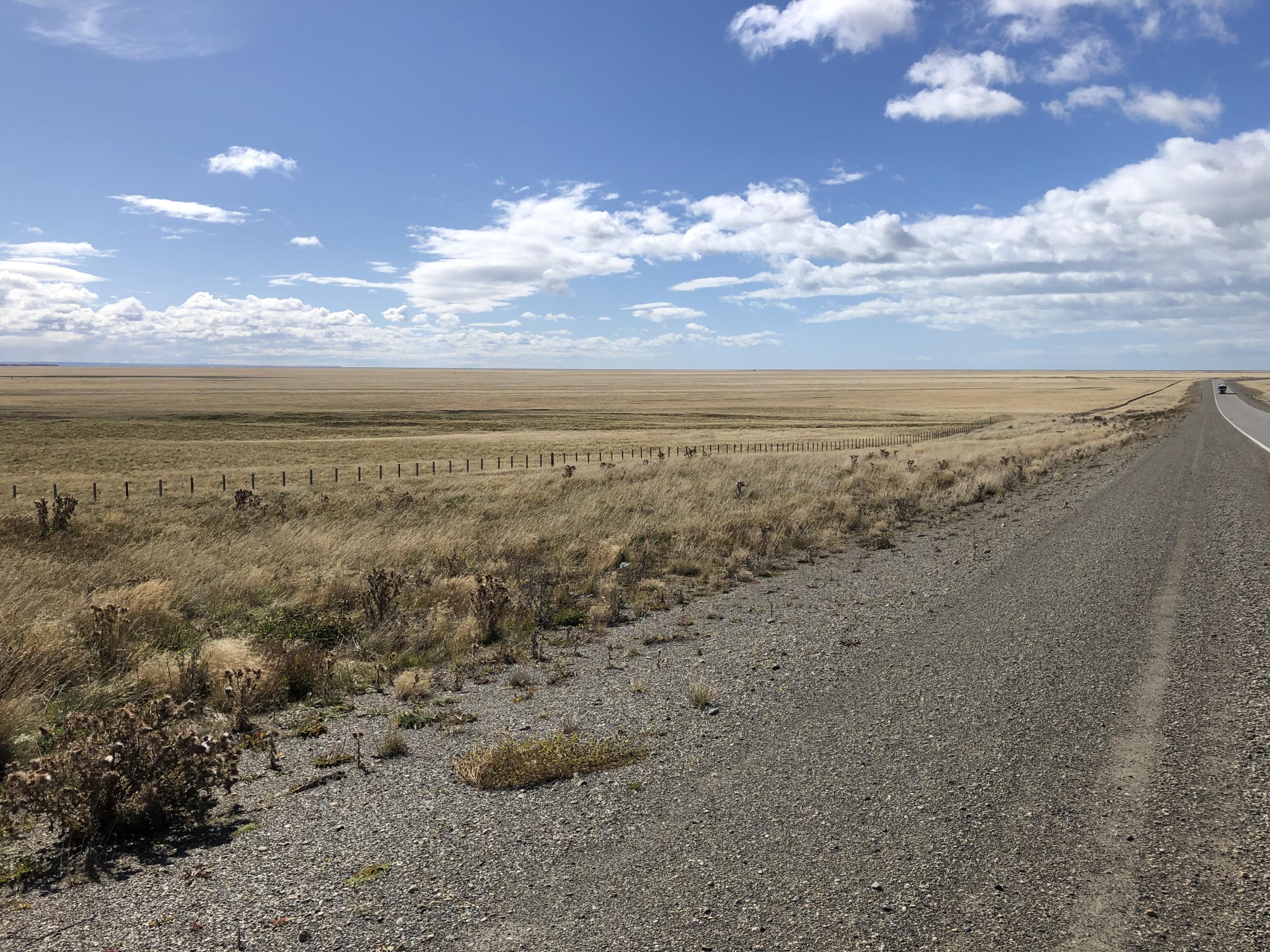
To be fair, that wind I keep banging on about was a big factor. When it was running head on or broadside it was too easy to hunch over, tense up and get upset at the helmet ripping my head off. Riding with the wind was relaxing and after a few minutes I realised I was enjoying the ride after all. It did take those moments to wake up to the change.
The town of Cerro Sombrero (“hat hill”) was an oddity. It was solidly a working town. I couldn’t find a supermarket or restaurant. Probably didn’t look hard enough.
Yet, it provided a free campground with wind shelters, tables, fireplaces and a heated ablution block with hot showers.
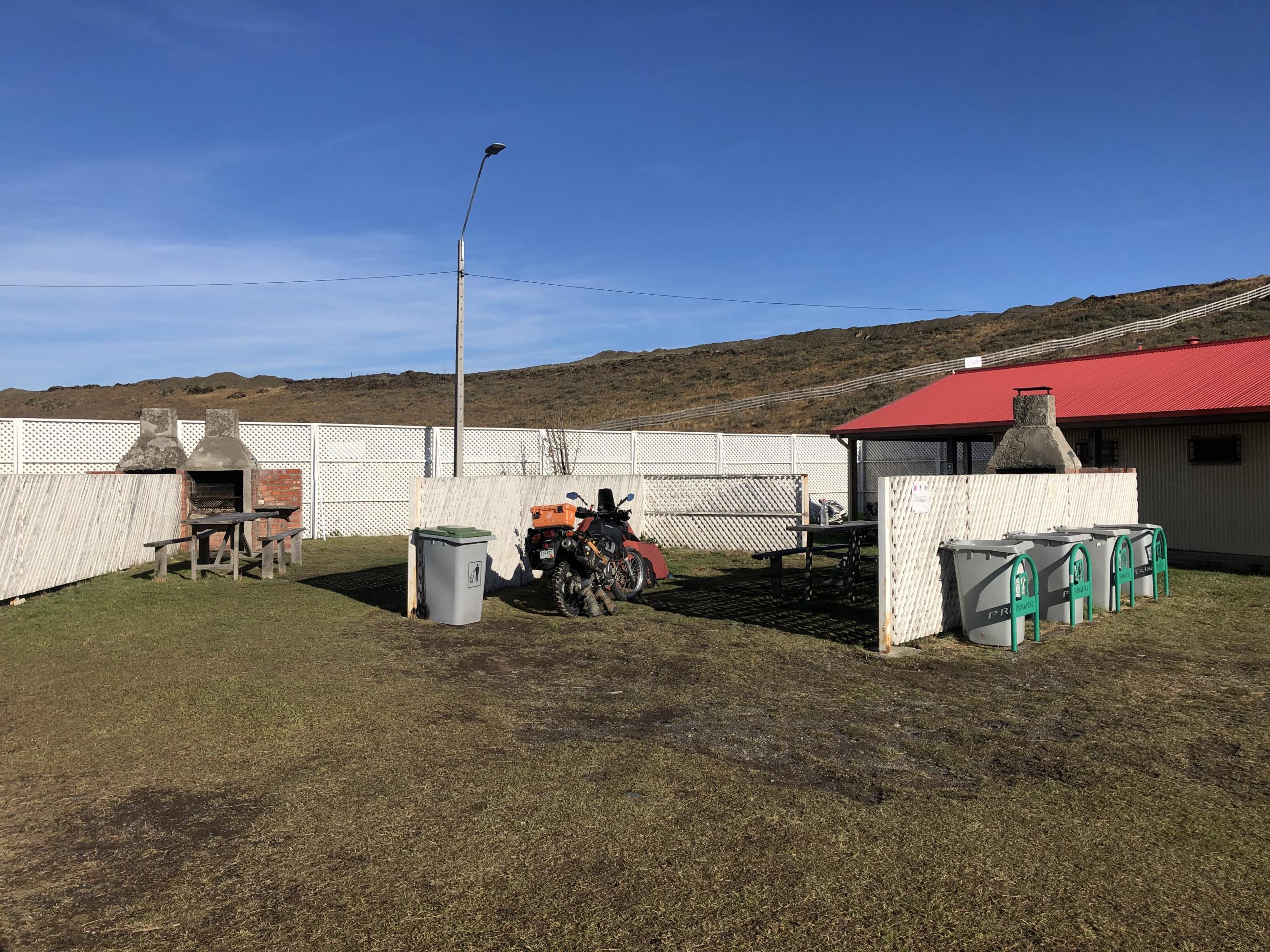
Wonder what happened here - wind? driver fell sleep?
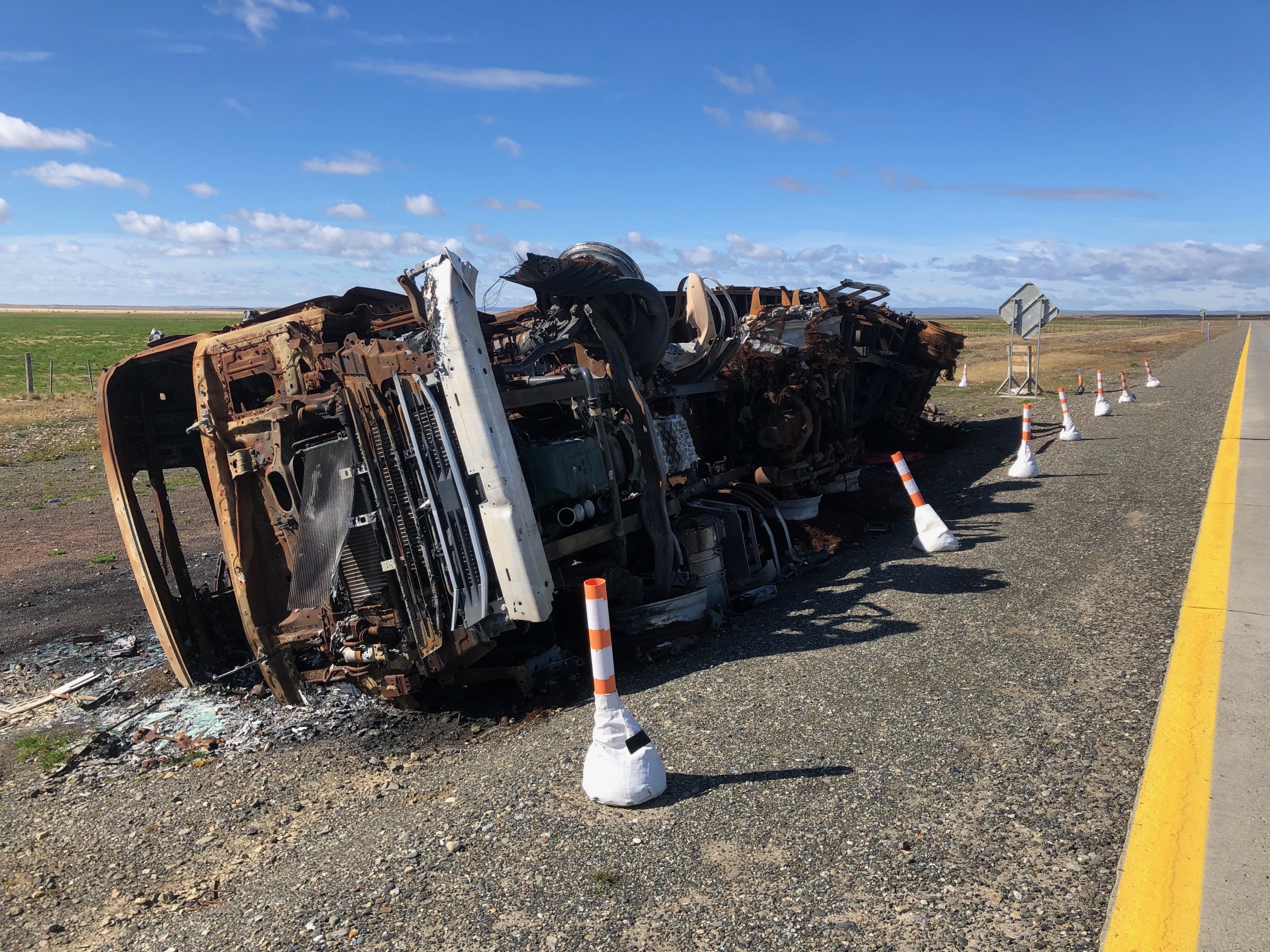
It’s probably confusing reading about the many Chile-Argentina border crossings. The border line is a bit odd in places.
Here Chile is coloured and Argentina white.
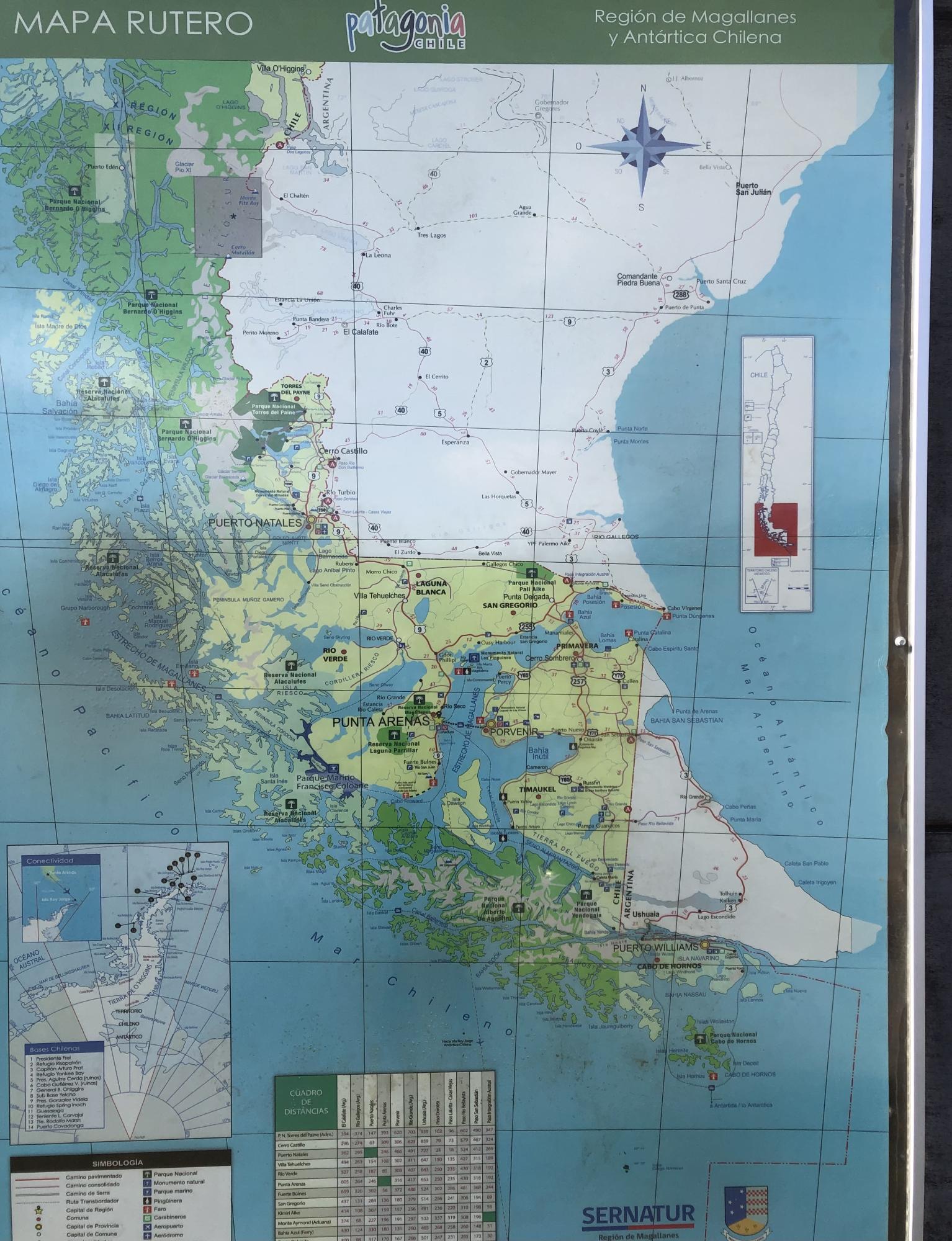
To reach Ushuaia from the Carretera Austral by road takes three border crossings:
- Carretera Austral is a dead end, so cross to RN40 in Argentina
- Ferries to island Tierra del Fuego leave from Chile, so cross back
- Tierra del Fuego has a north-south border close by the eastern coast, back into Argentina
Ushusia is in Argentina. Just.
In the middle of nowhere on the island, the immigration and vehicle permit dance was needed, including checks for fresh produce and Chilean visa, vehicle ownership, passport stamps.

All of sudden, there was the Atlantic.
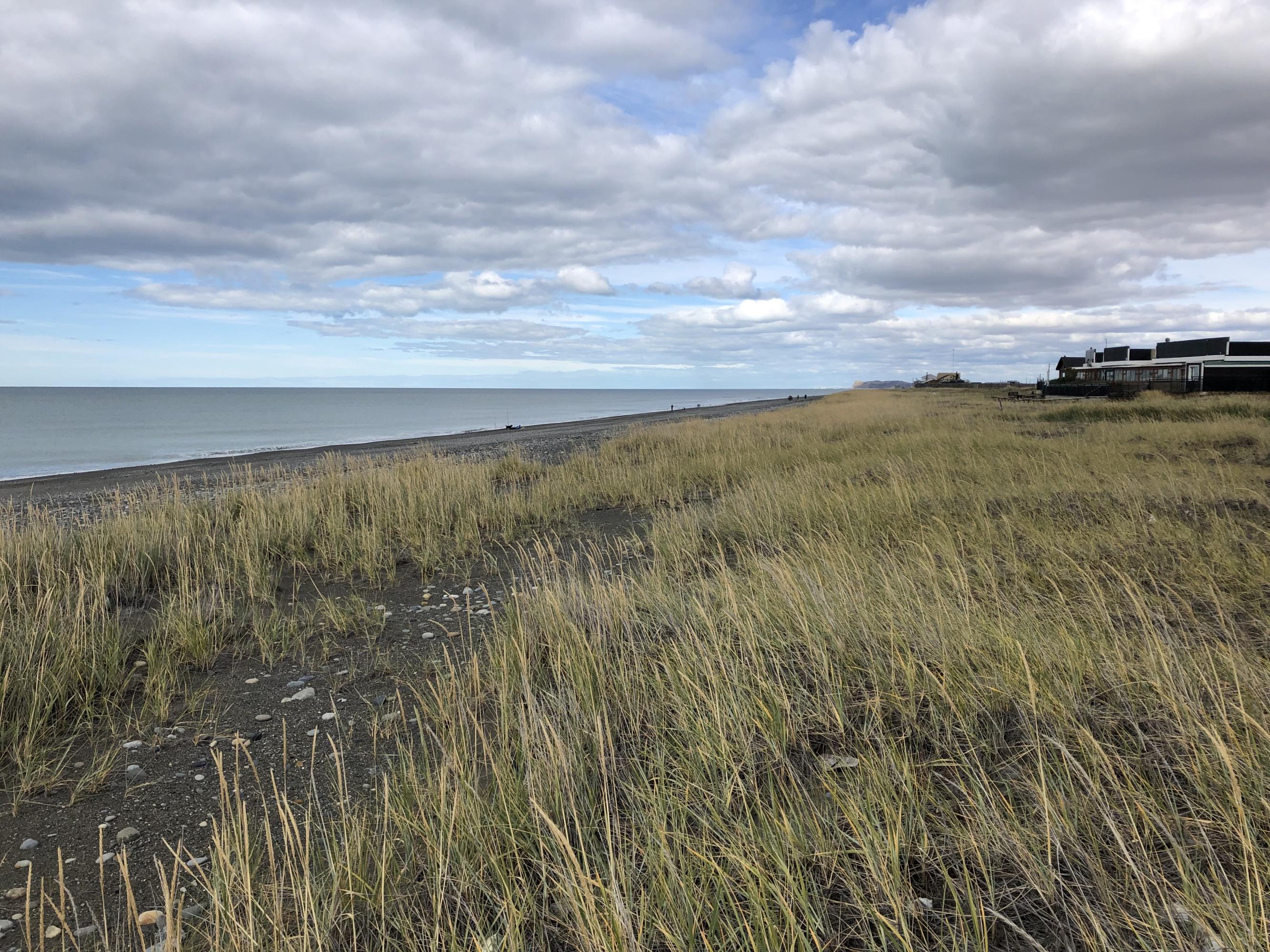
Rio Grande had a memorial to the glorious fighters of the Malvinas. This was a big theme later in Ushuaia as well. Maggie used to call them “The Falklands”.

Walking in Tolhuin on a Sunday morning there were vroom vroom noises somewhere close by. They sounded like four cylinder machines, but cars not bikes. Sure enough a race circuit had a club level event running.
Most cars were in a 1300cc FWD class.
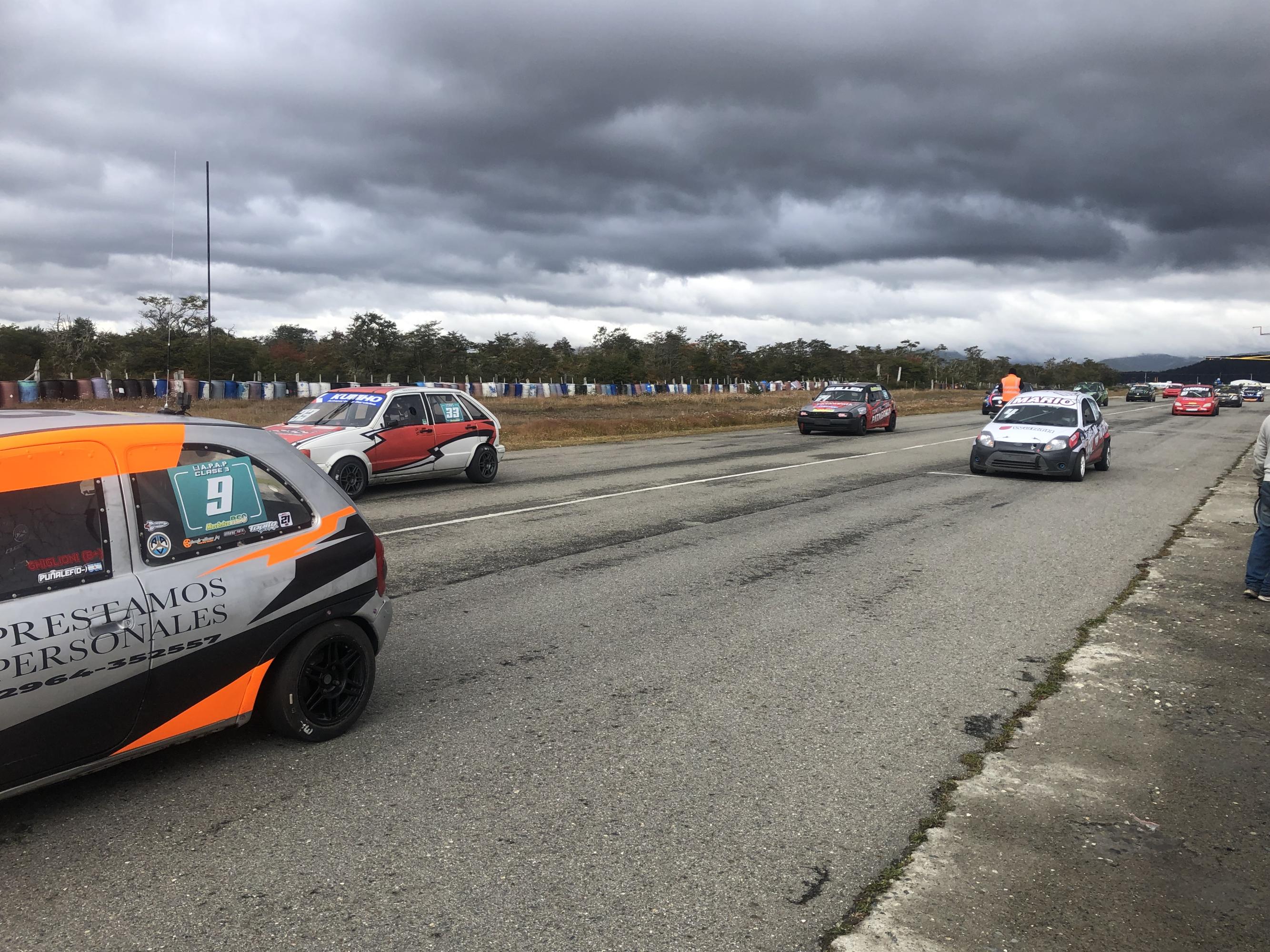
There were also notionally 1960s Falcons with lots of home made aero. Check out the size of the sway bar.
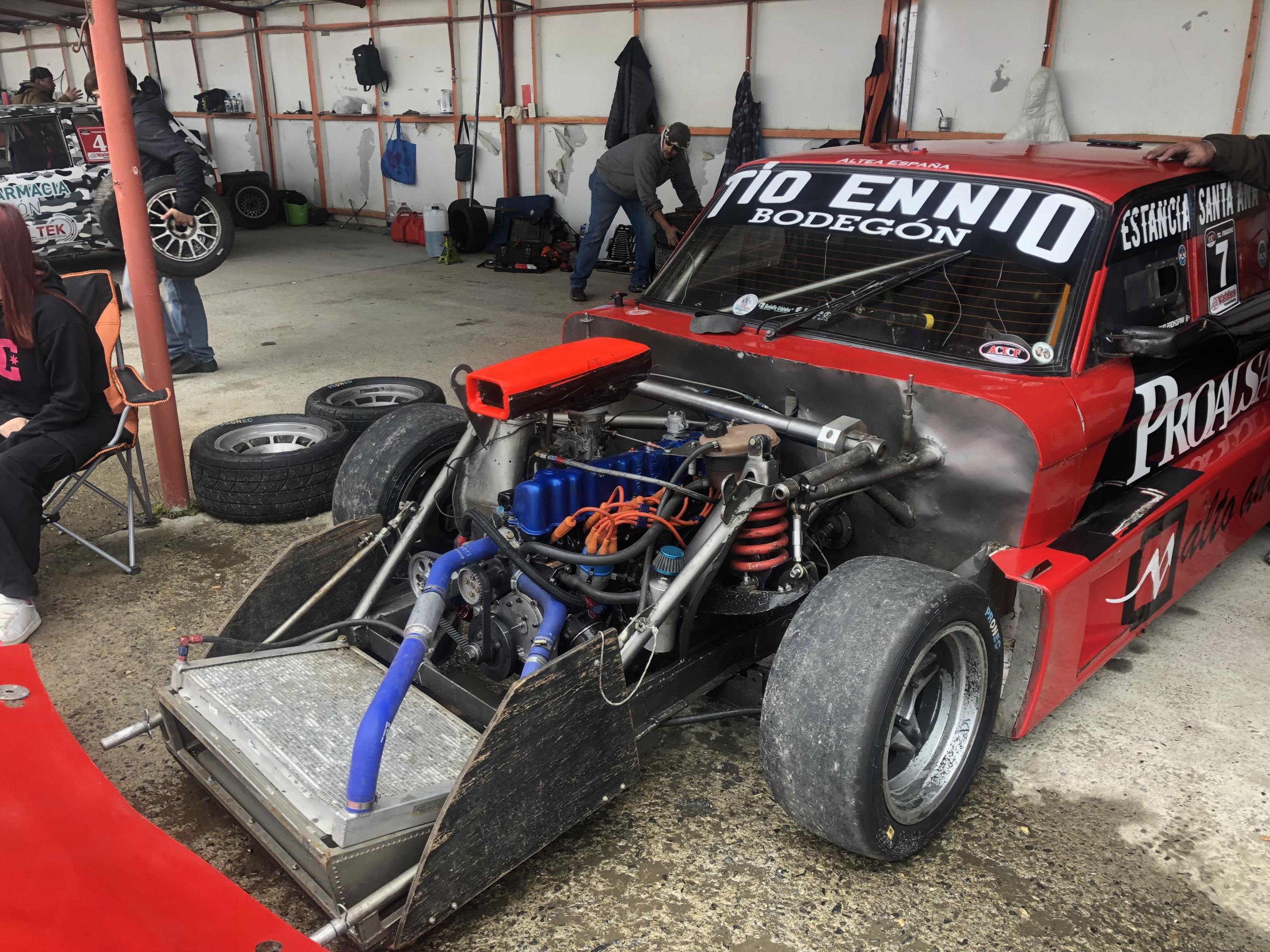
Hundreds of people were there, many families supporting. Most pit crew were warding off the internal cold by smoking.
It was great seeing everyone so involved and I felt a sudden pang inside, remembering the buzz of sprint meetings back home. Looking forward to getting back on track.
The final hurrah was over the Gariboldi pass where the Andes turn sideways, the only place they run east-west.
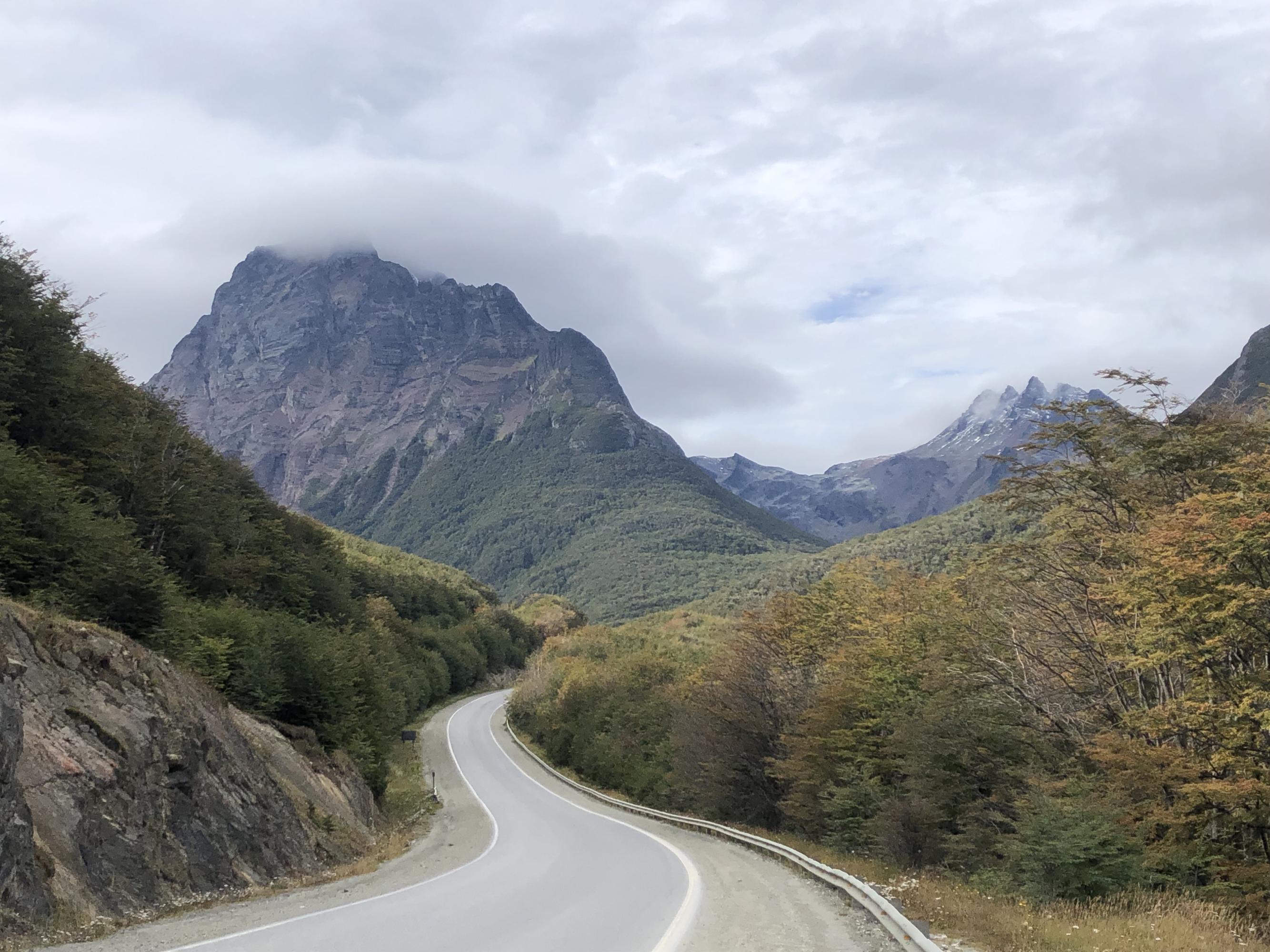
There it was.
Ushuaia, the southern most city in the world.
54.8 degrees south.
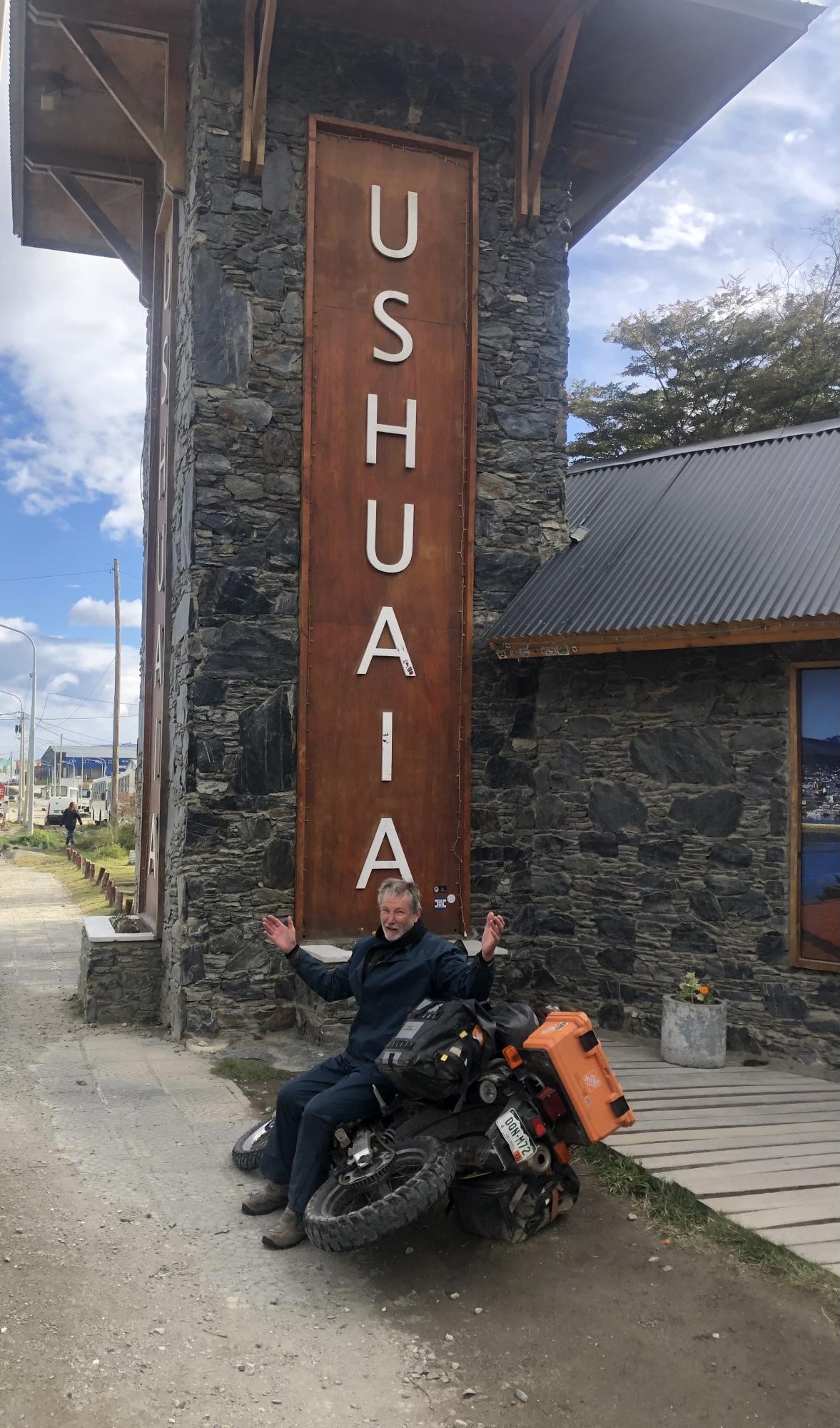
(Yes dad, you're right, strictly one could go further south to island Puerto Williams in Chile but my mob regard this as the end of the line)
I felt on top of the world ... so to speak.
Bikers stopped for an obligatory photo at the sign above. One was Mikis, whom I’d met a few times before. We had a conversation that started nicely, before he felt the need to pass on his Christian beliefs. I shared mine in response and left.
I spent three nights there. Probably mostly from the glow of achievement, I enjoyed the city. It sits underneath a curve of mountains and looks out on a bay with islands.
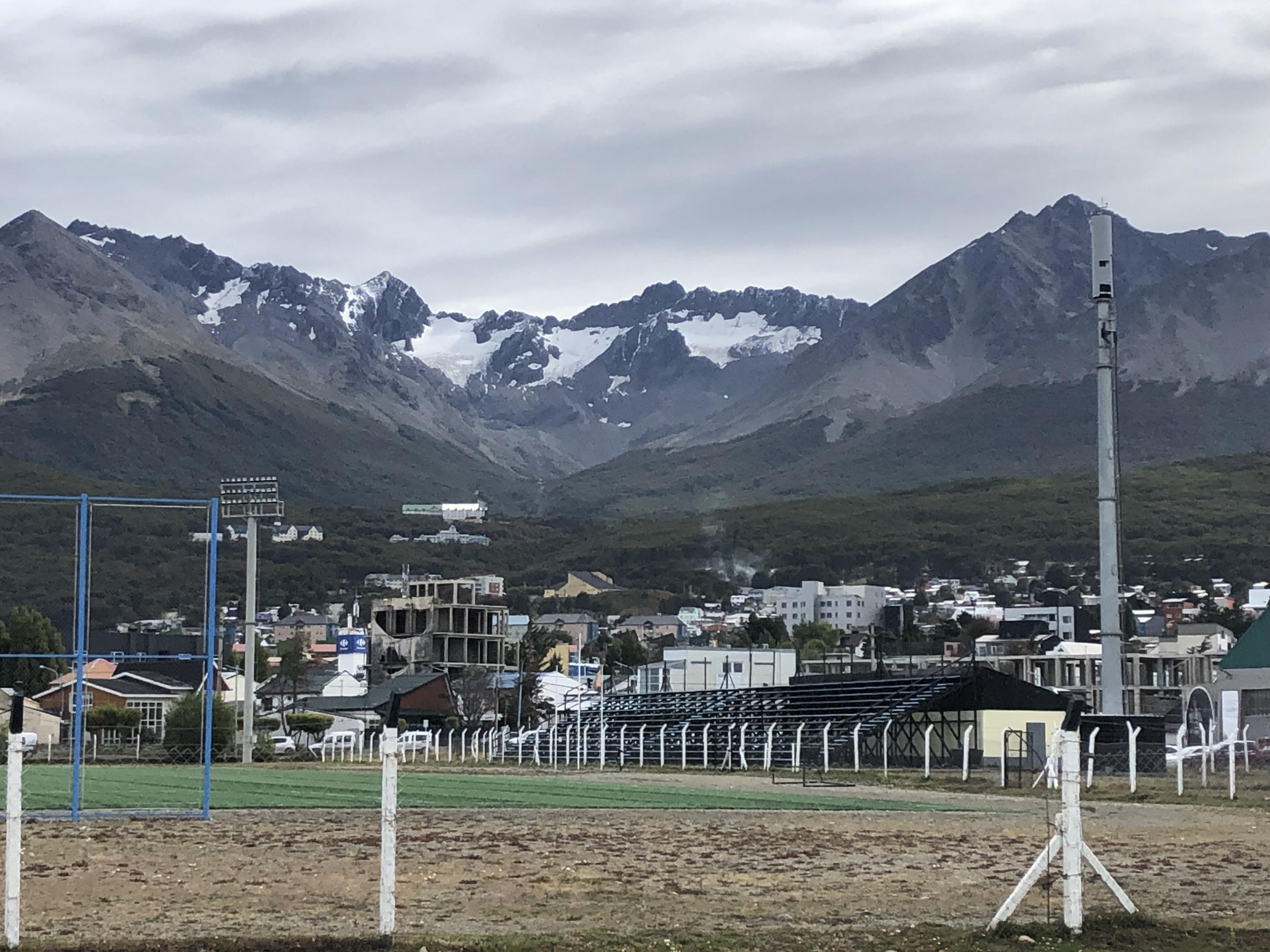
I hiked to the Martial Glacier, only a few kilometres from the city. The glacier itself was modest, but the valley it had cut was impressive.
Views from the base of Martial Glacier.
I fell in love with a bakery a block away.
For starters the lady serving had a big heart. This old girl wandered in, wagging her tail at all patrons then snuggled up for a pat. My new favourite lady grabbed a bread roll, waved it in front of the old pooch and took her outside.

Your dog? No, a neighbour’s.
She won me with her facturas as well. I ate two dozen over the few days.

Having reached Ushuaia the question was “What now?”.
A year ago it was easy to say “I’ll get to the bottom of South America, sell the bike (hand wiping motion) and go home - Great trip!”.
Reality is different.
It’s illegal to sell a foreign plated vehicle. It must be imported, duties paid, bureaucracy satisfied and so on, taking weeks. It’s possible to effectively sell to another traveller by conferring rights to them. The trick is that the new owner has to be known before the seller leaves the country.
As I write I’m unsure what to do.

